
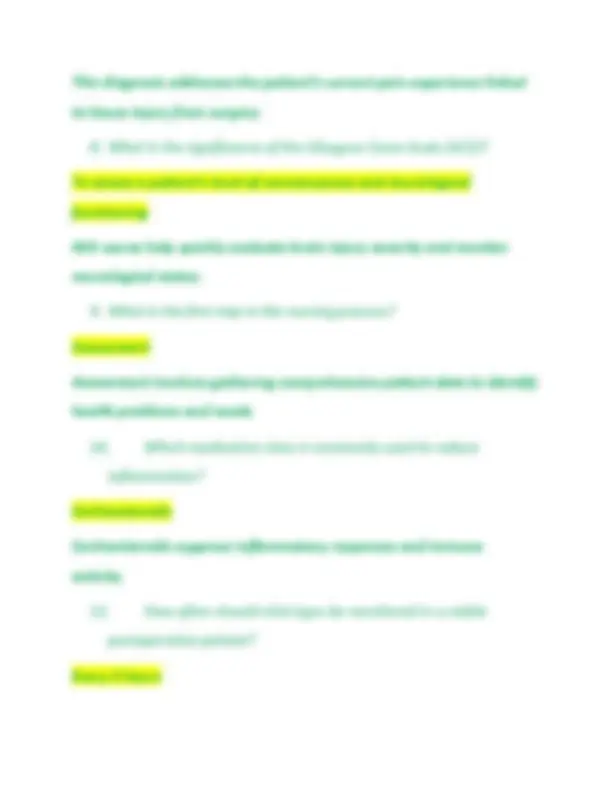
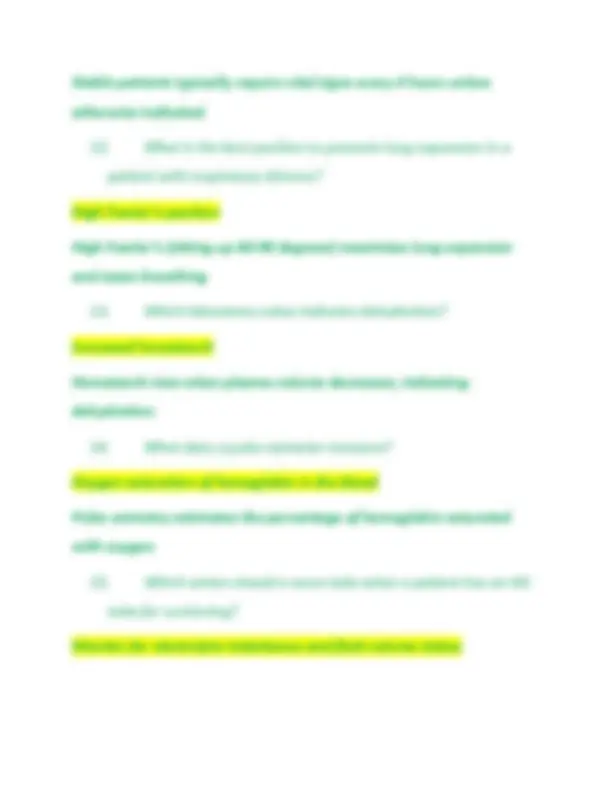
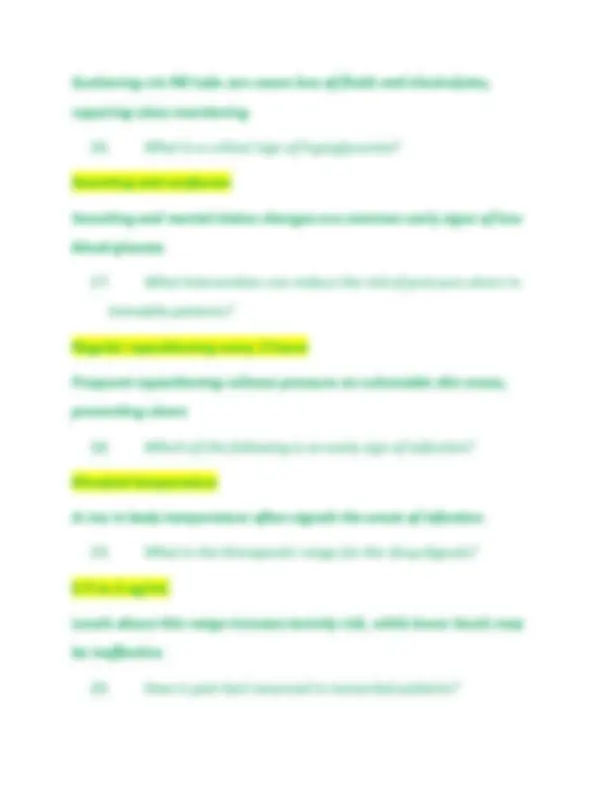
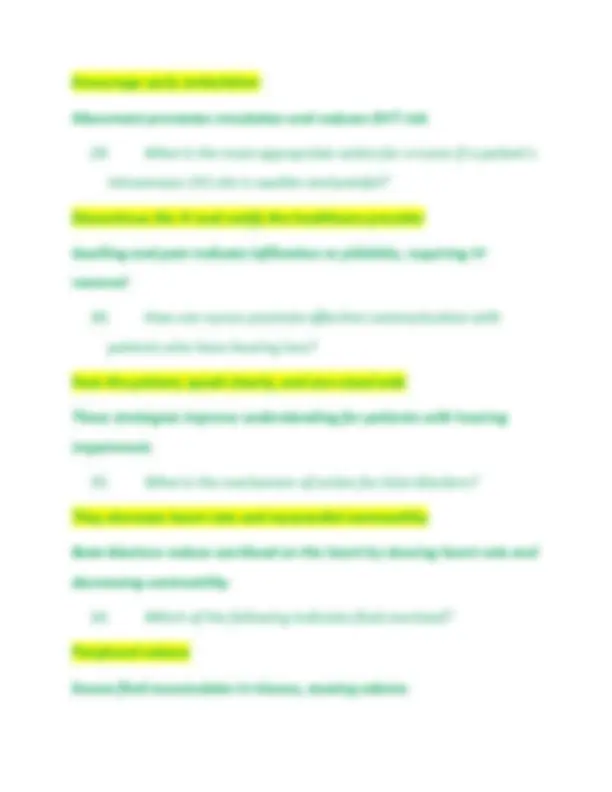
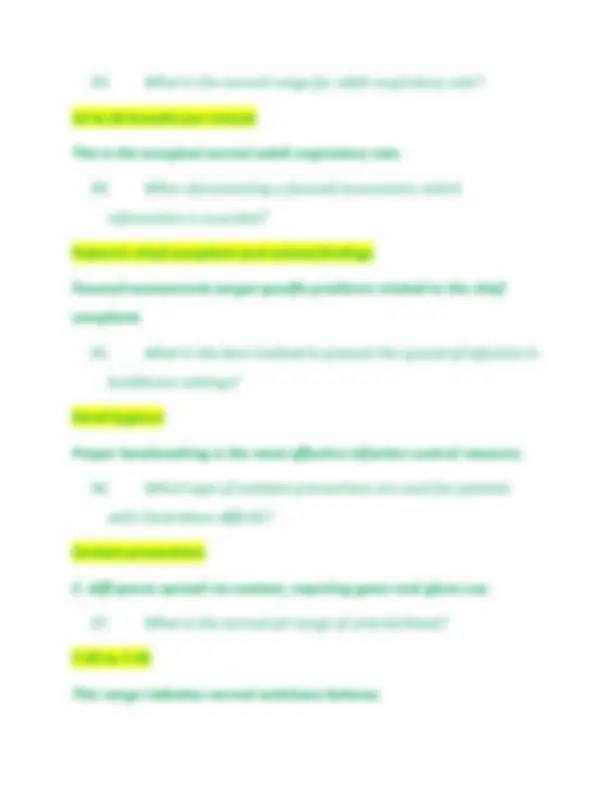
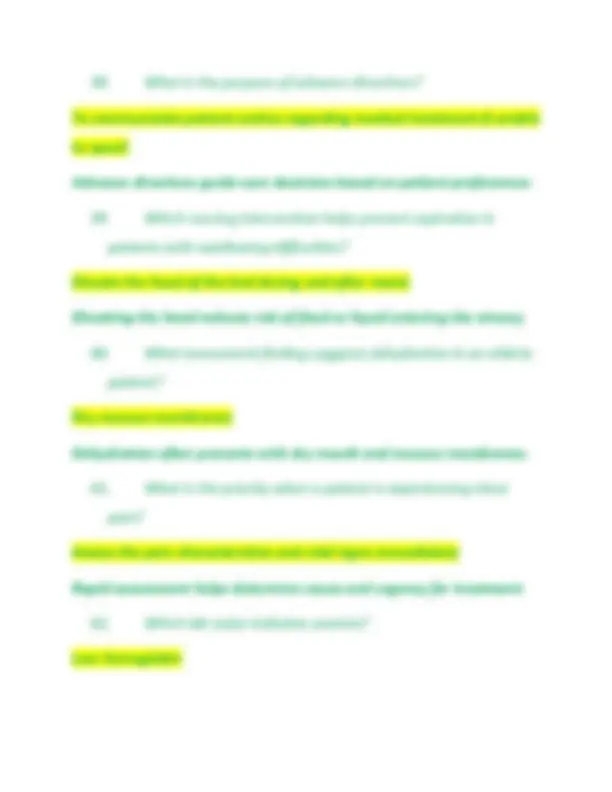
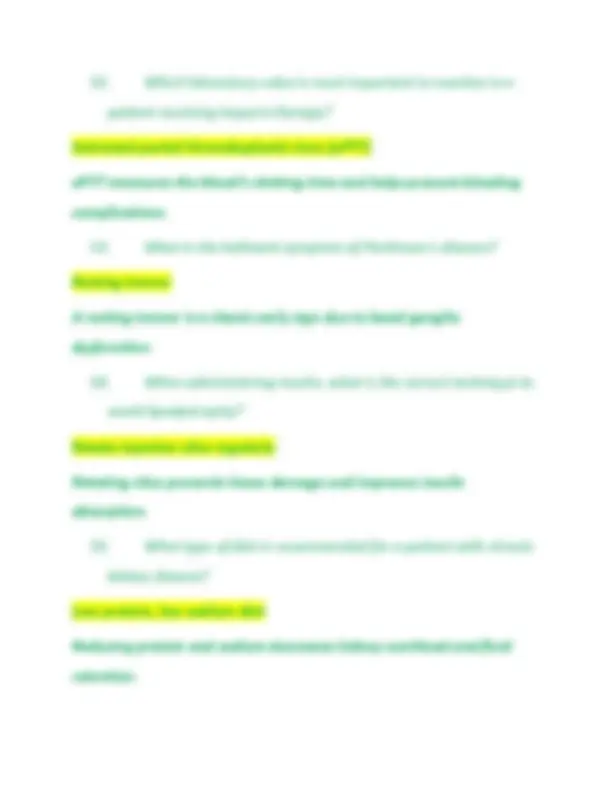
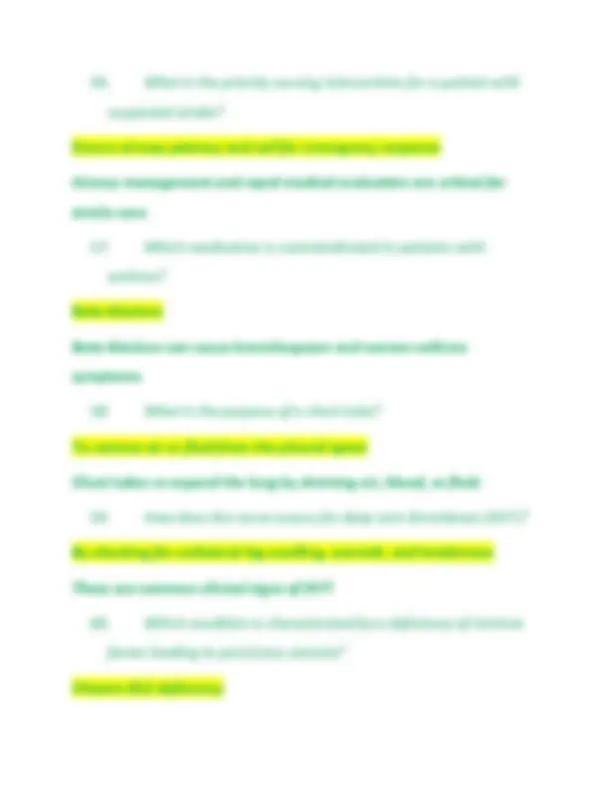
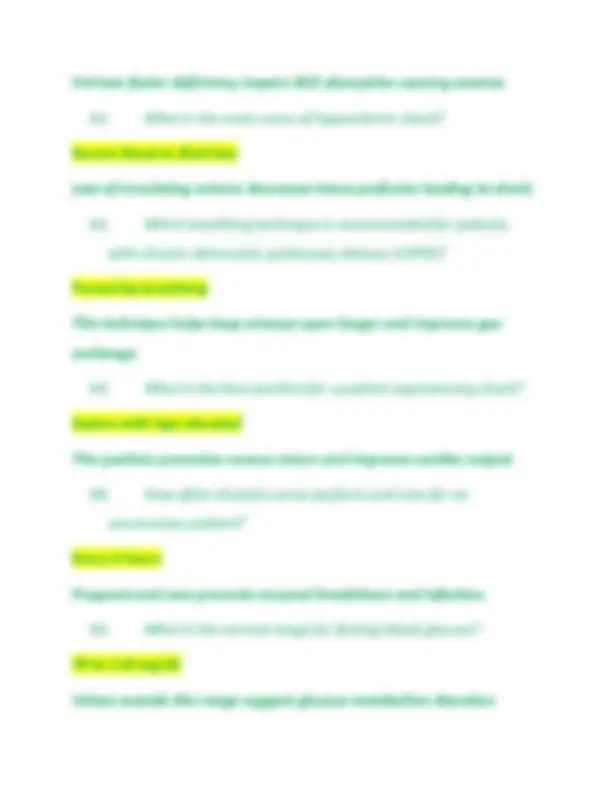
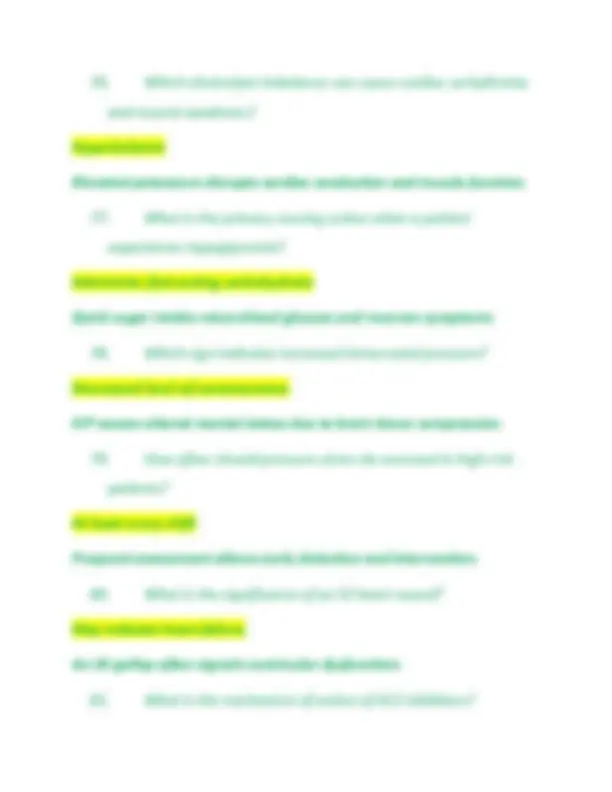
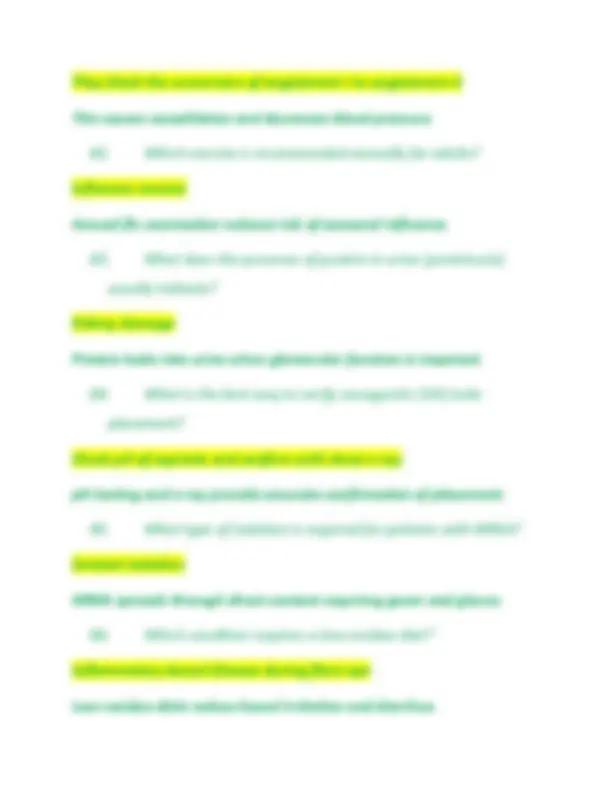
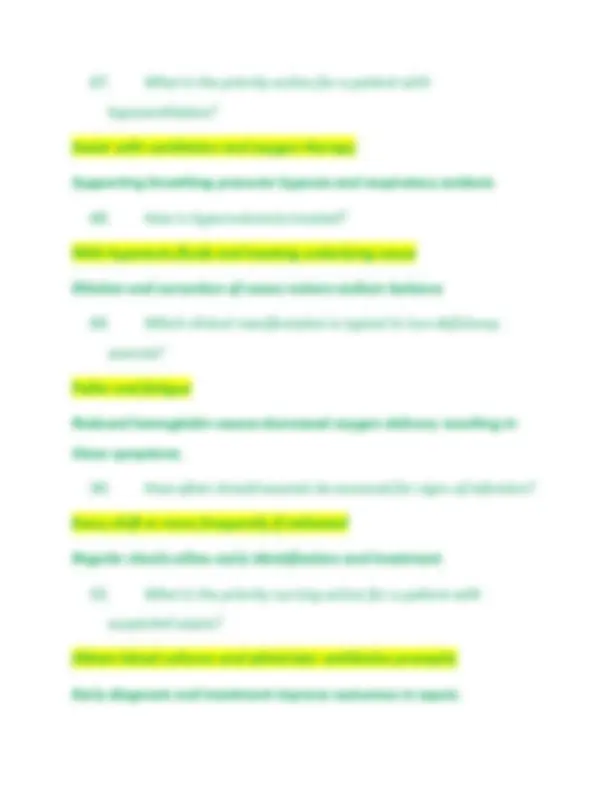
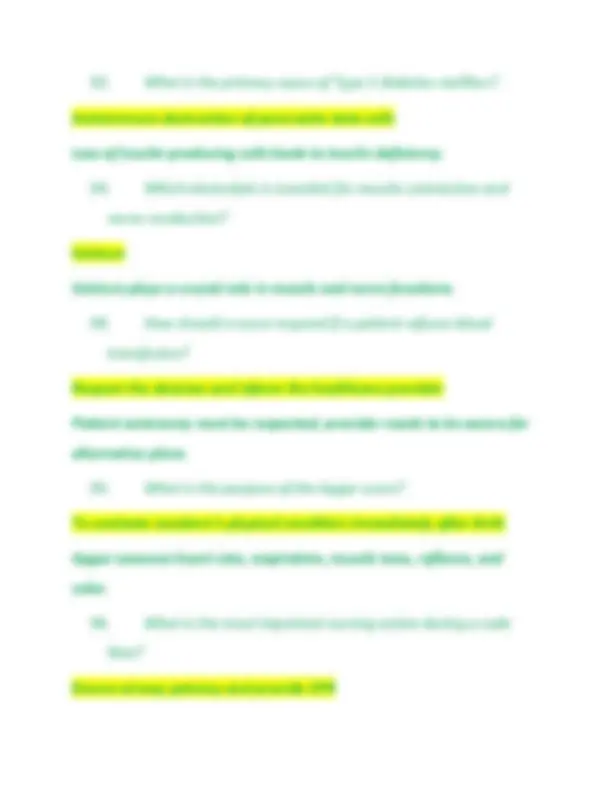
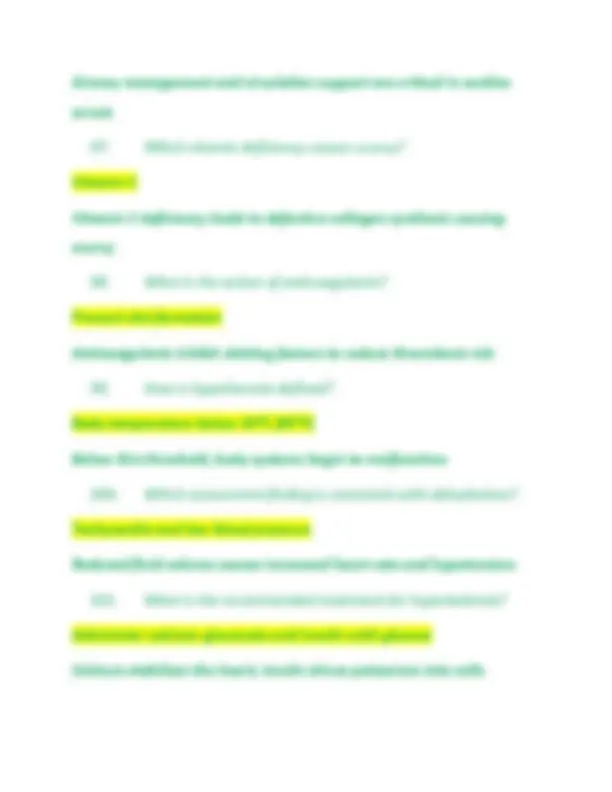
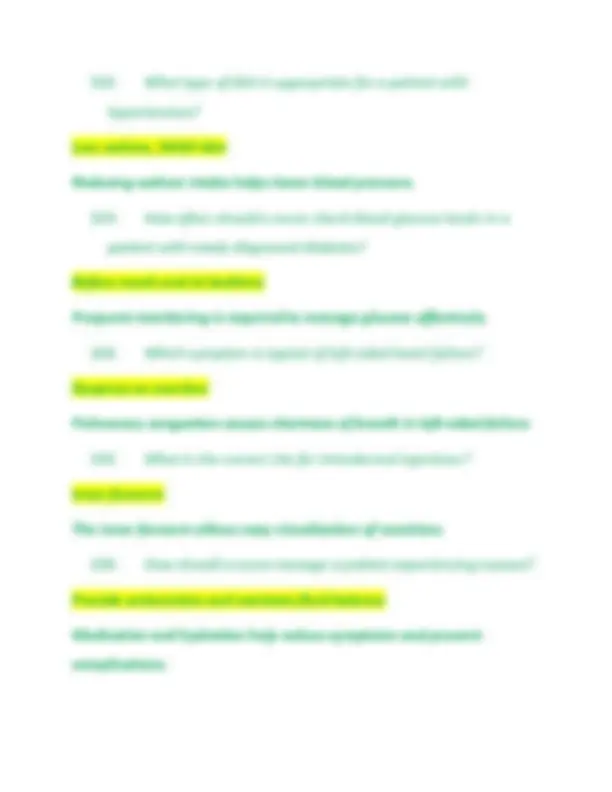
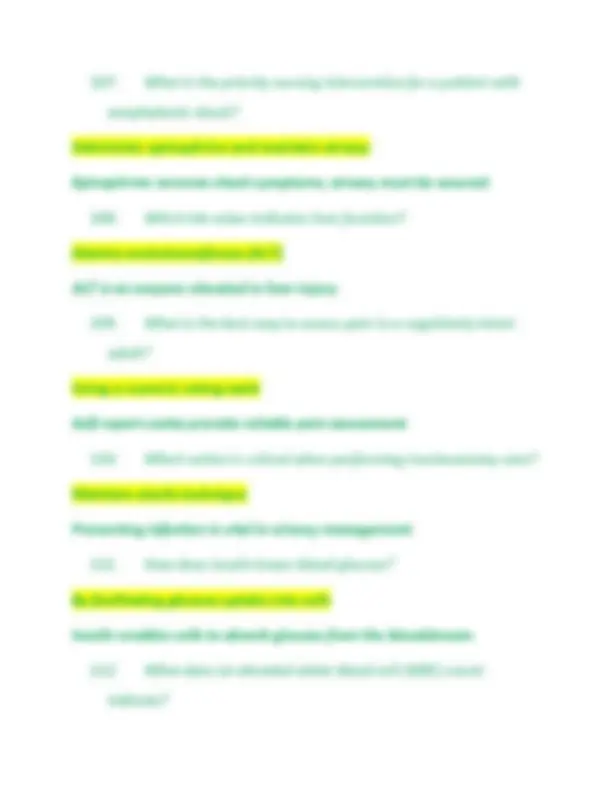
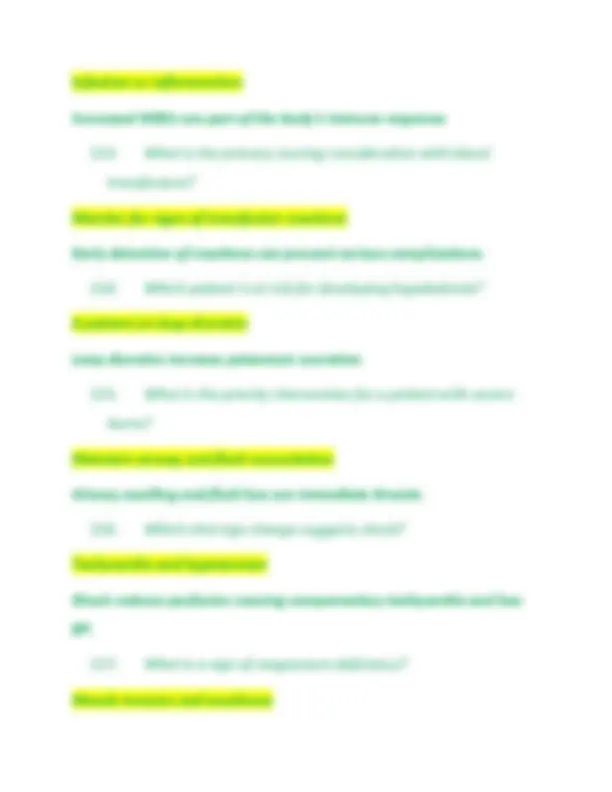
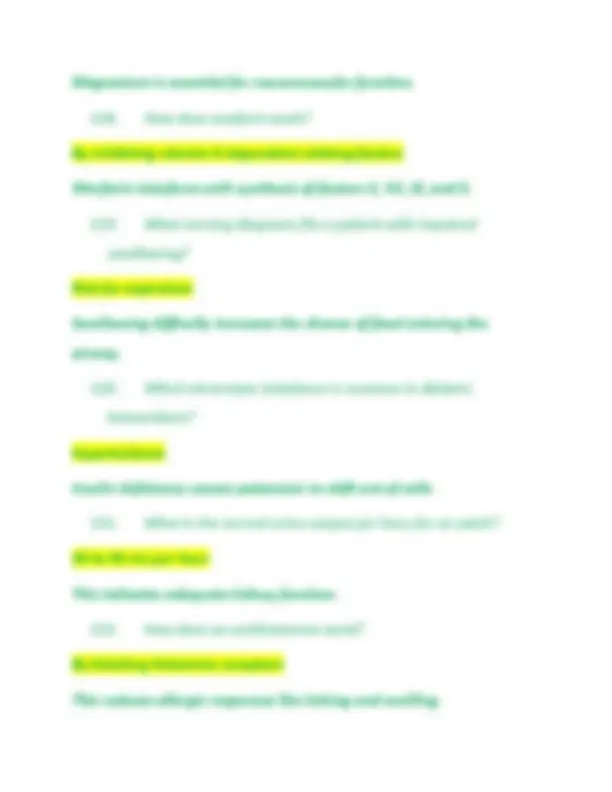
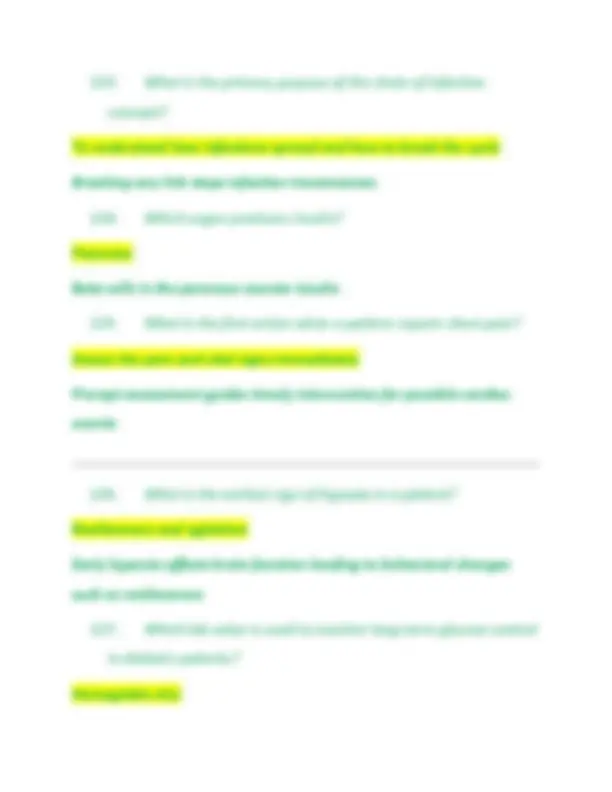
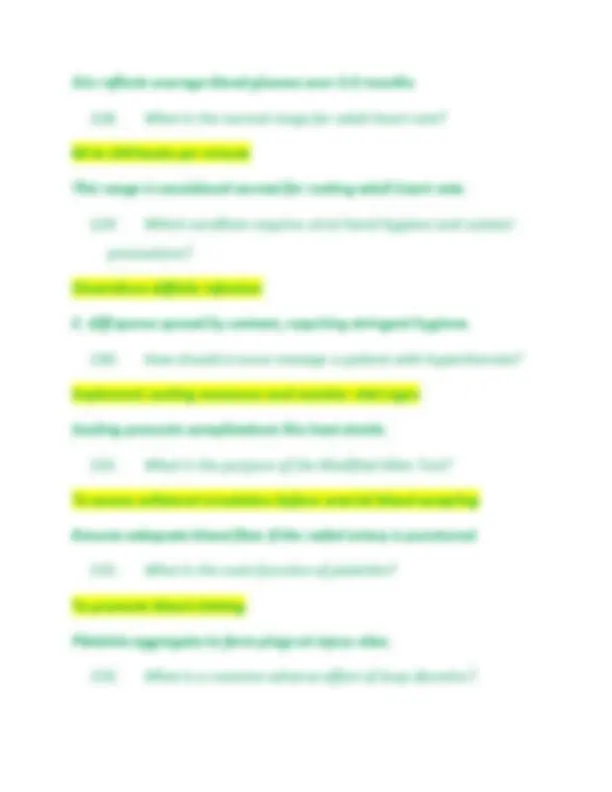
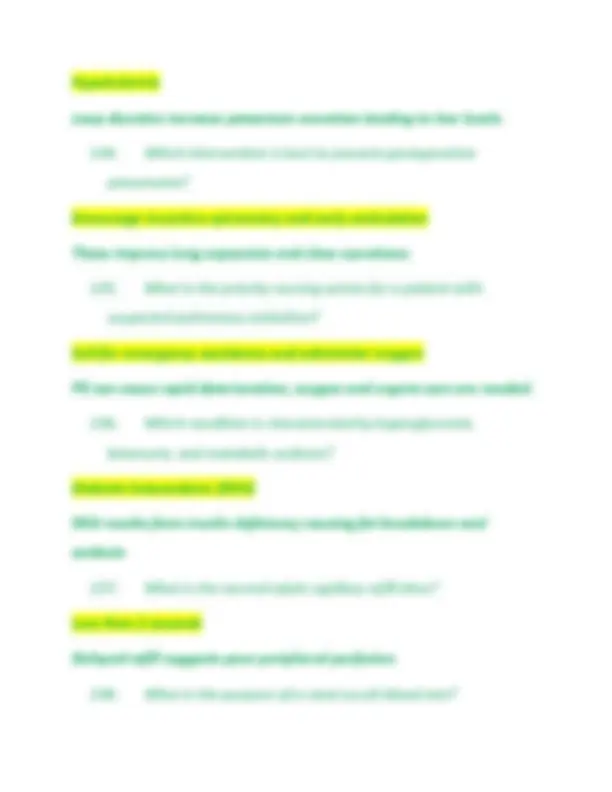
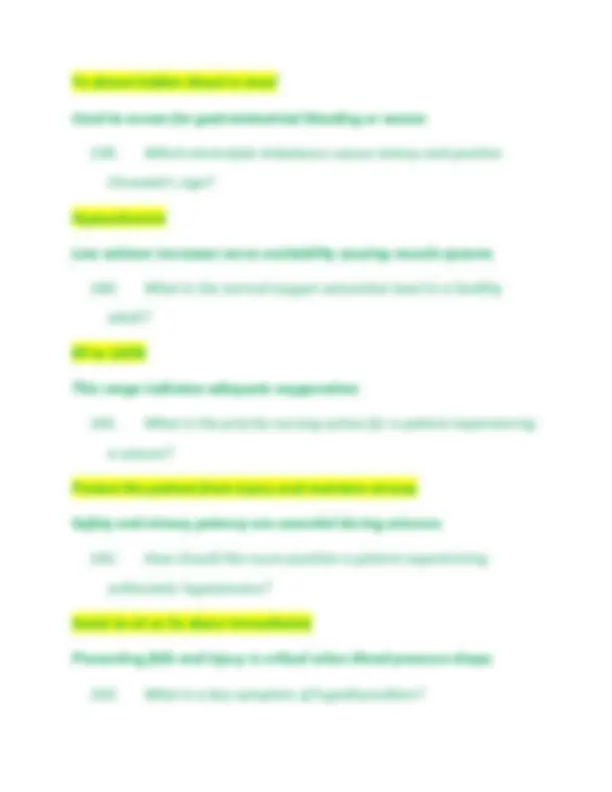
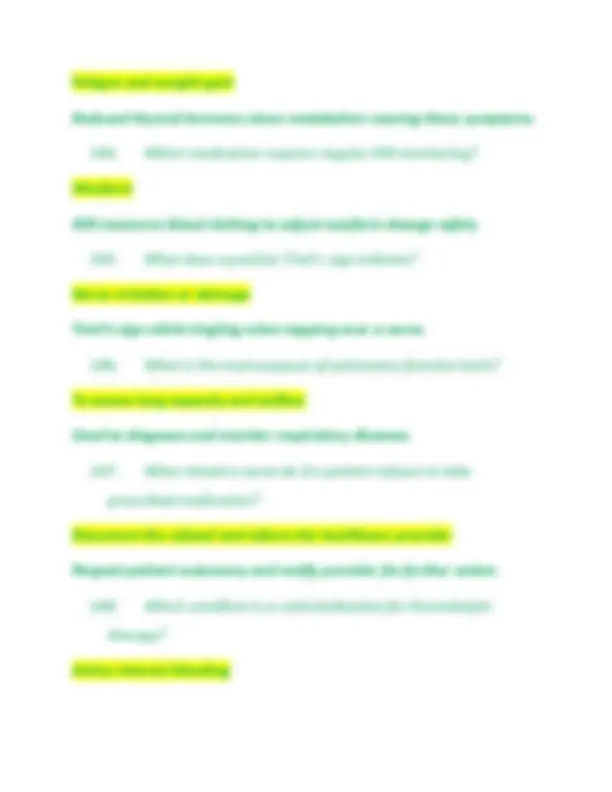
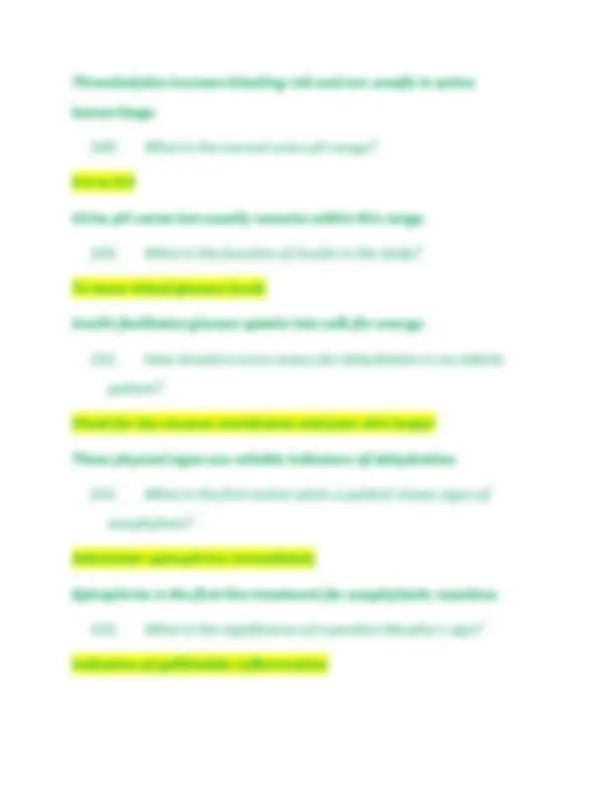
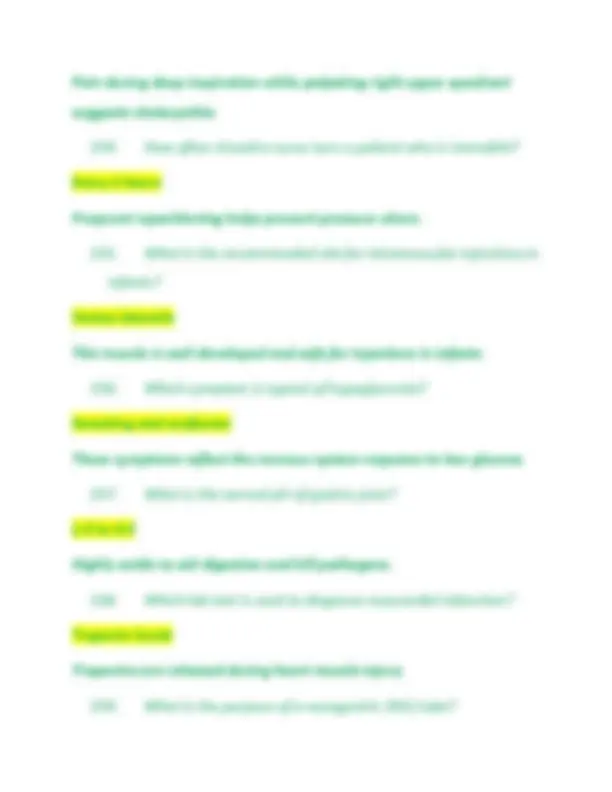
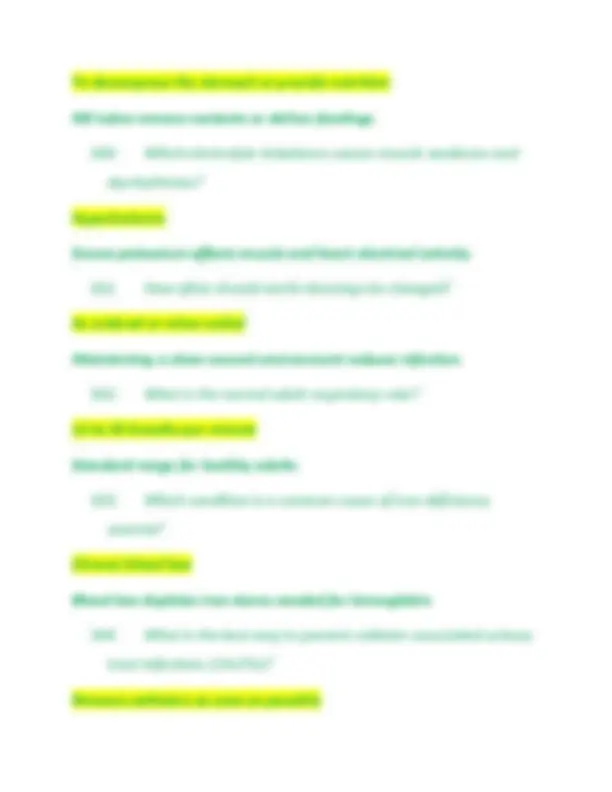
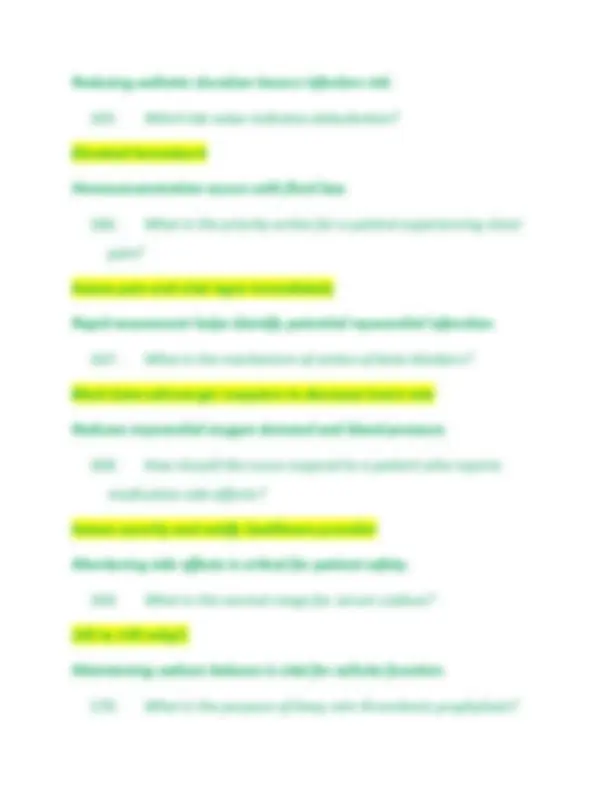
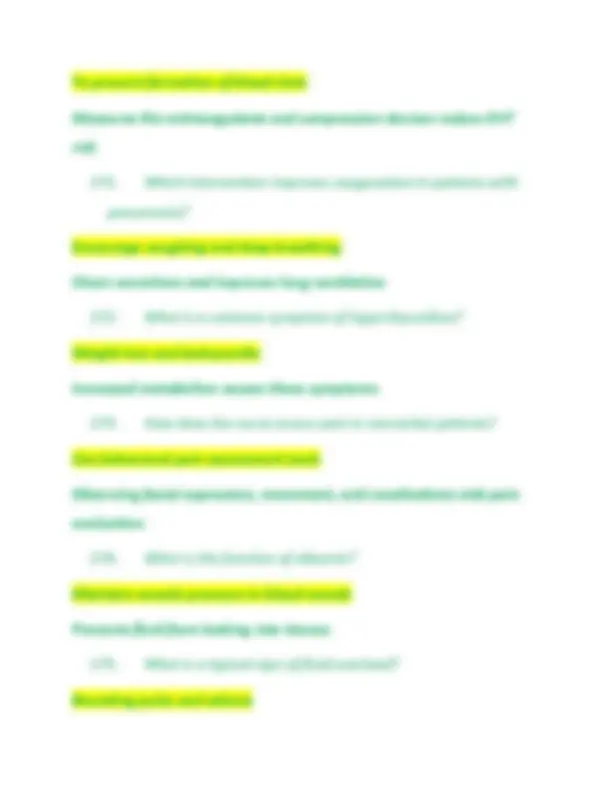
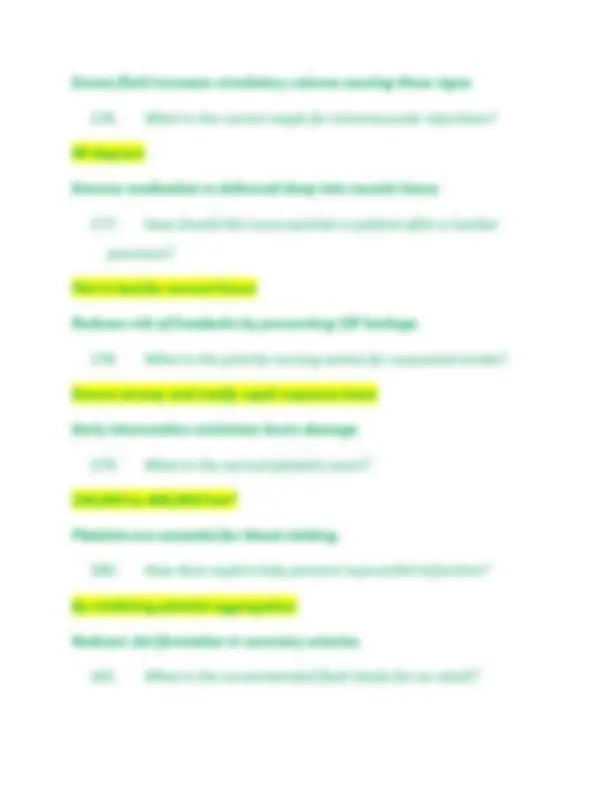
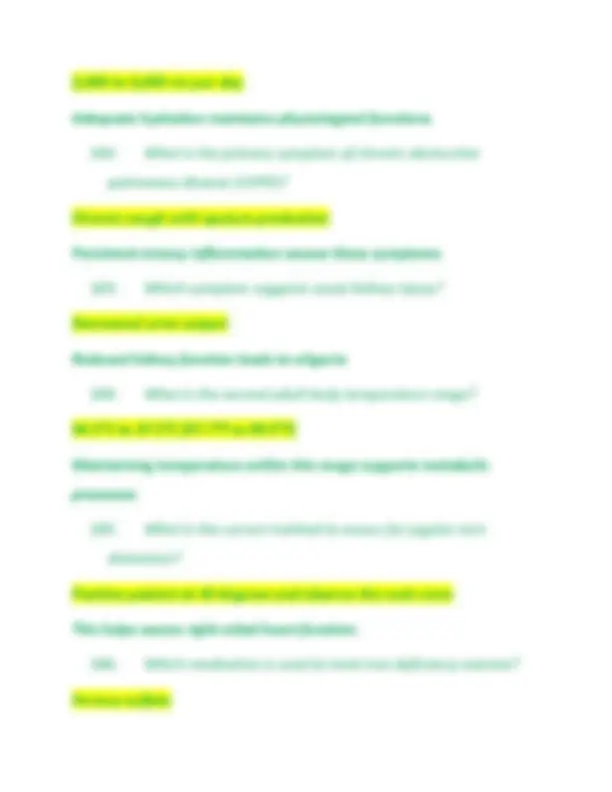
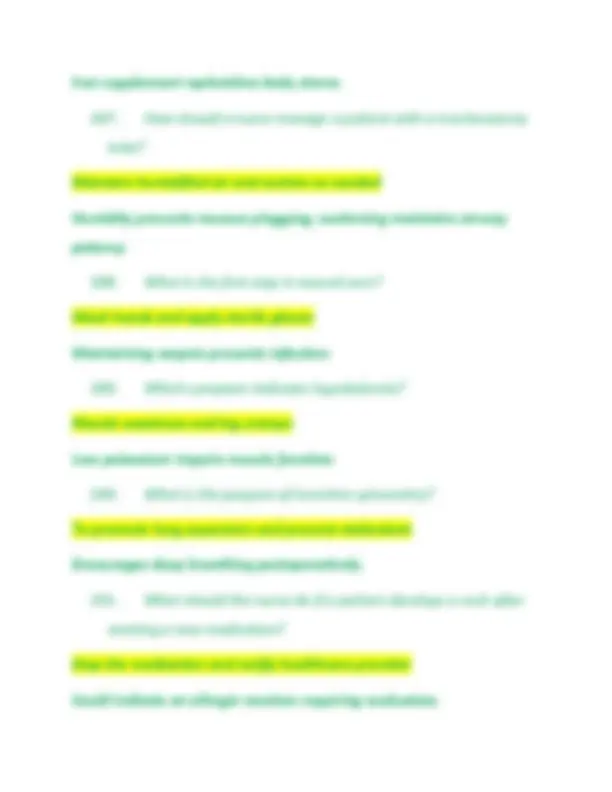
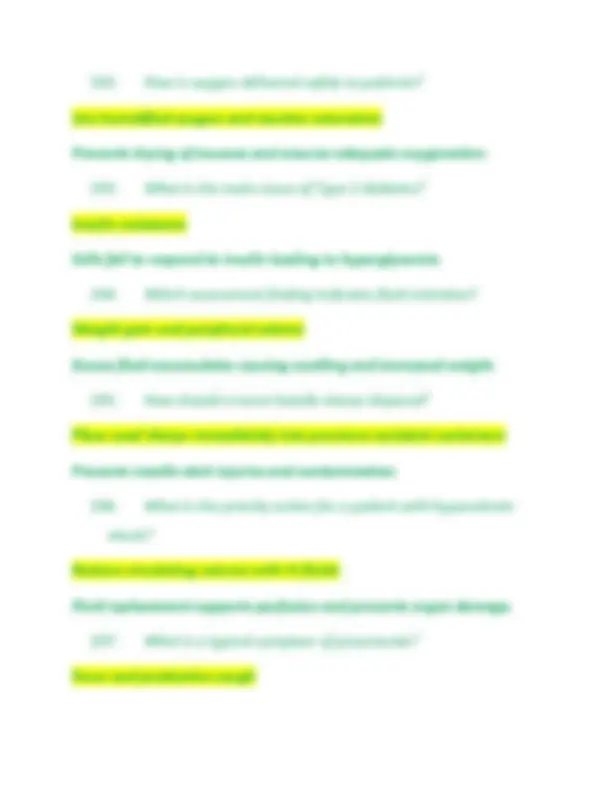
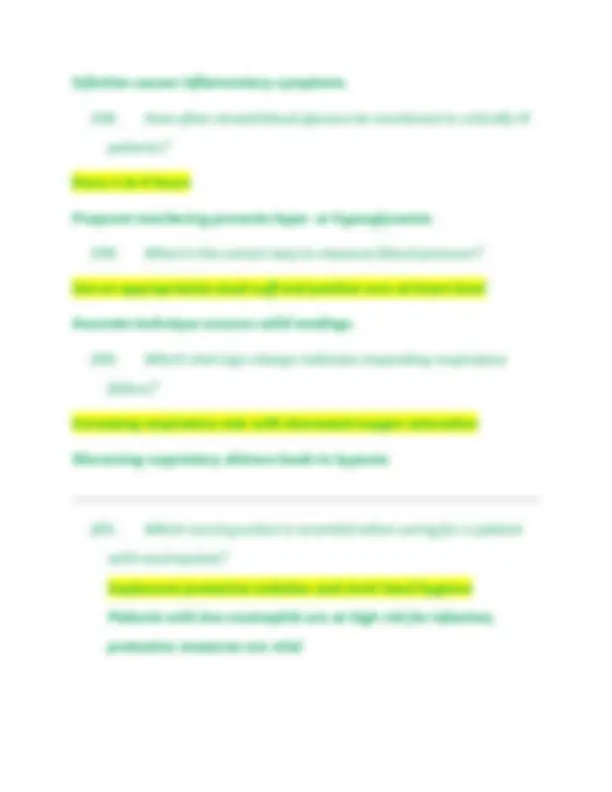
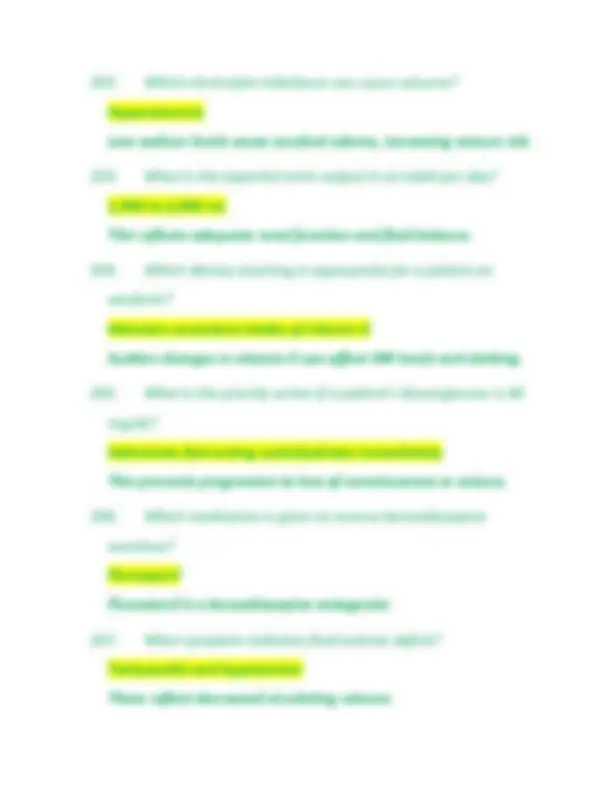
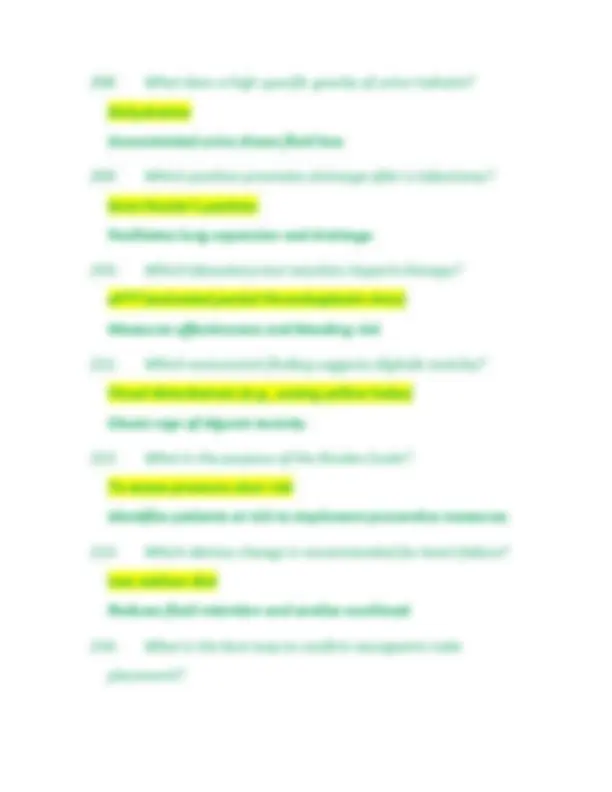


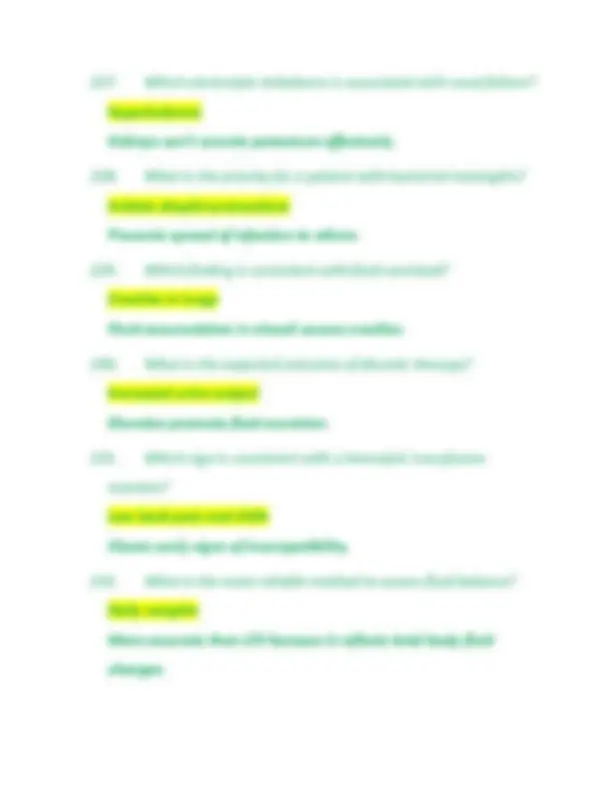
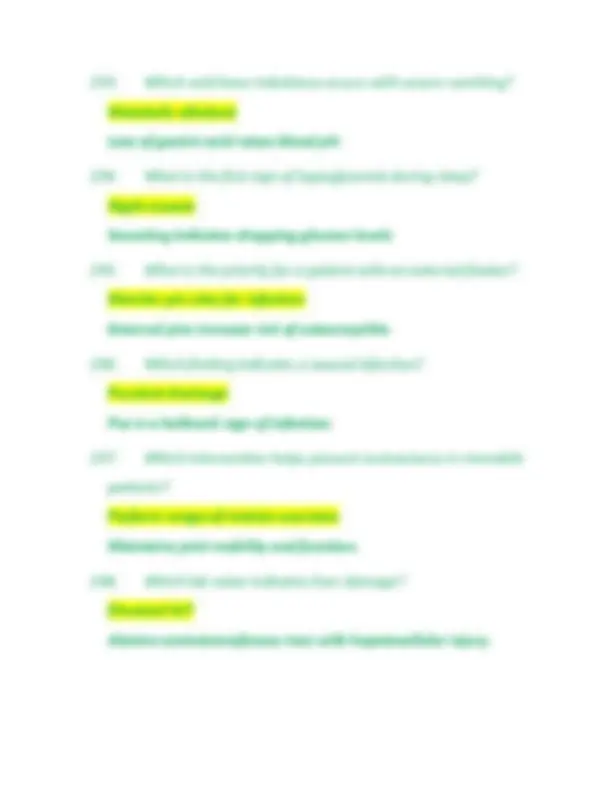
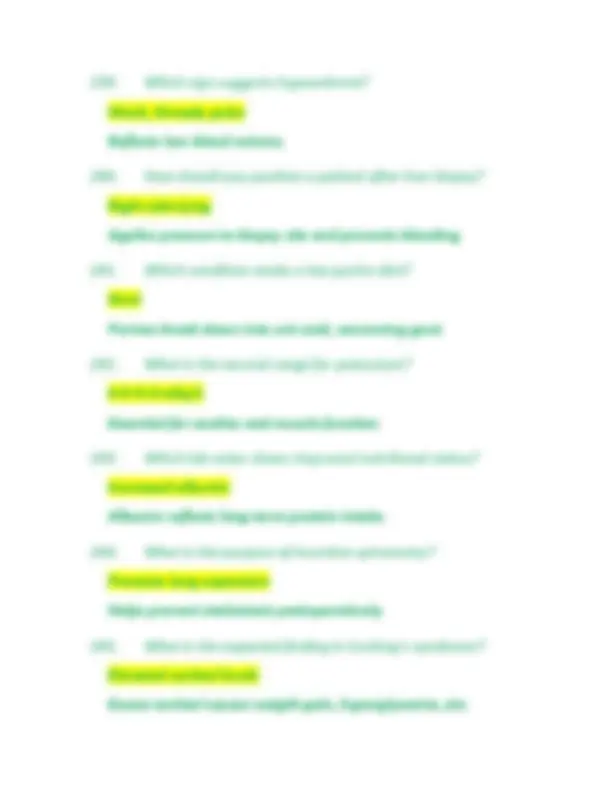
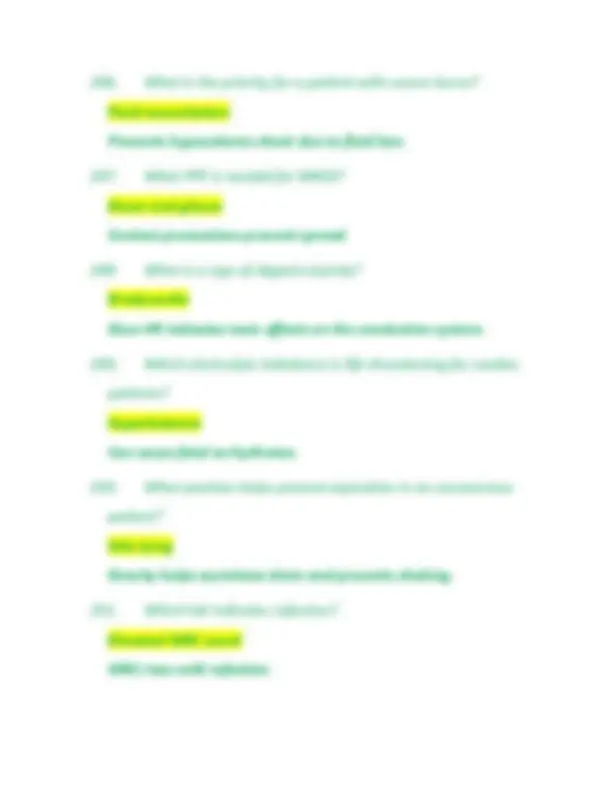
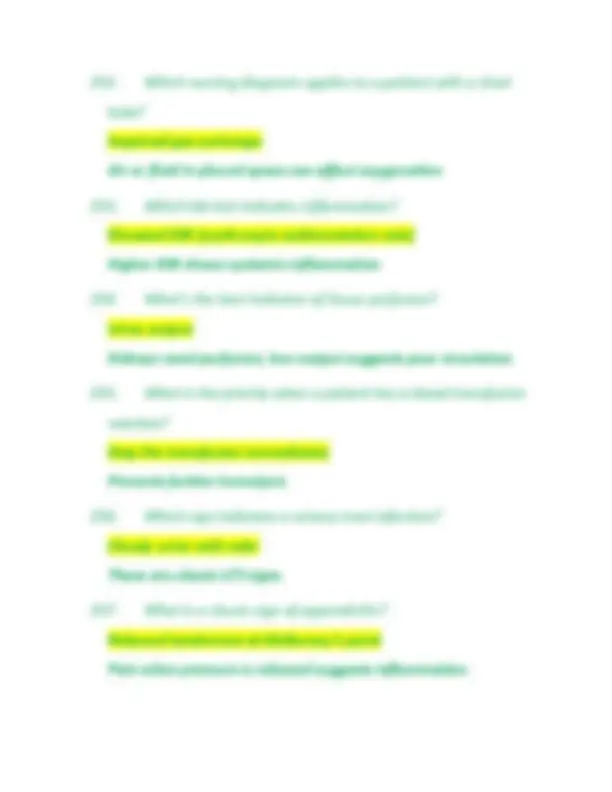
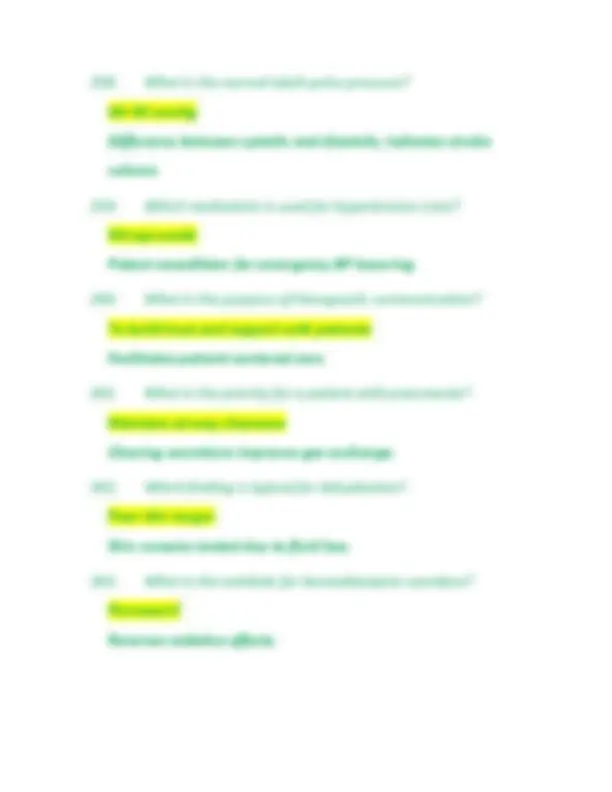
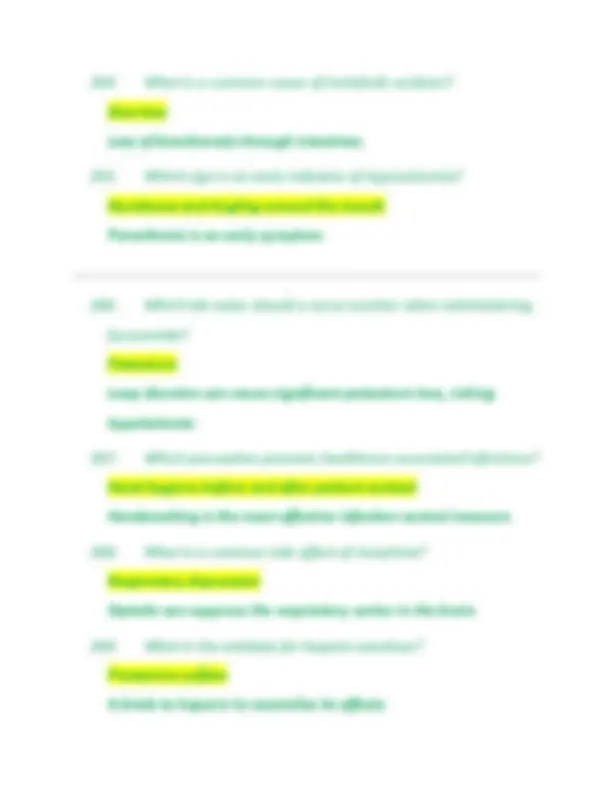
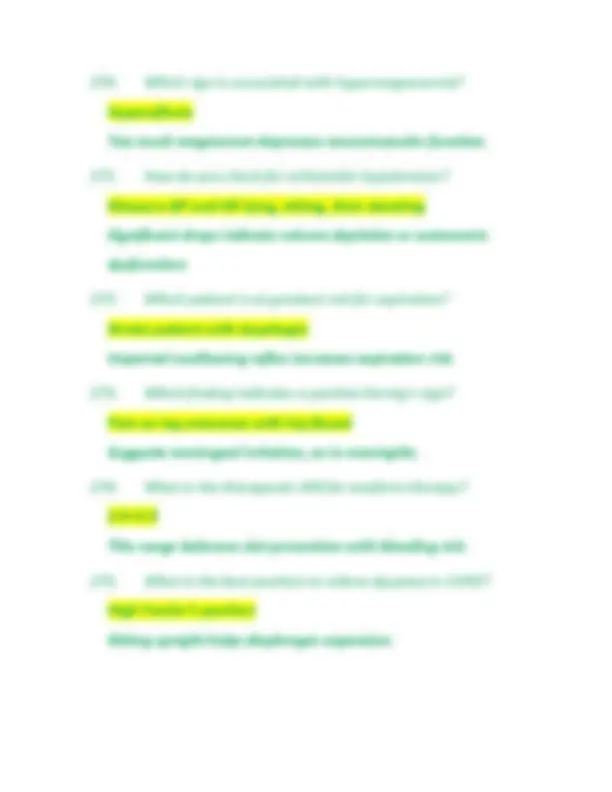
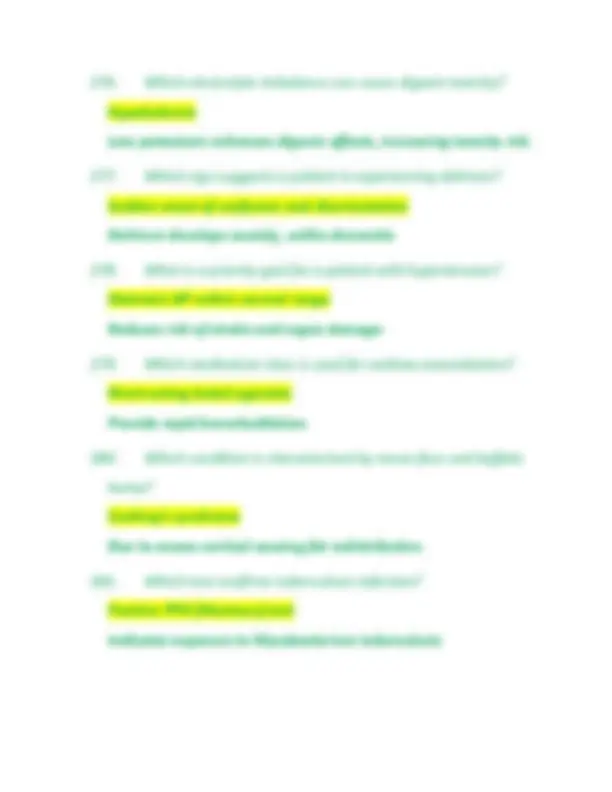
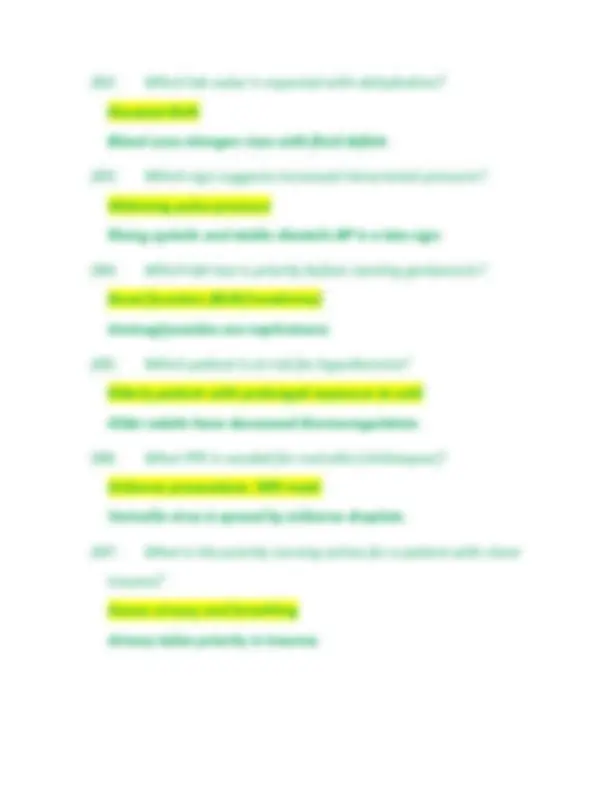
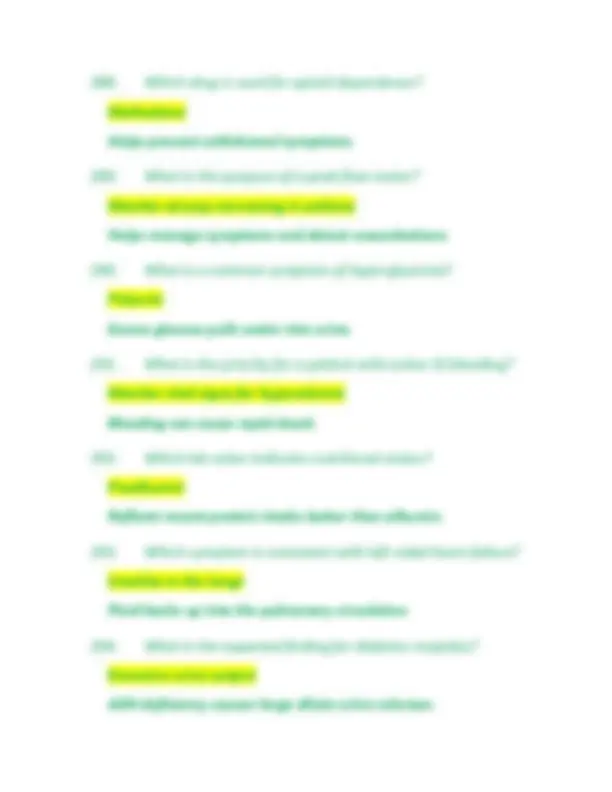
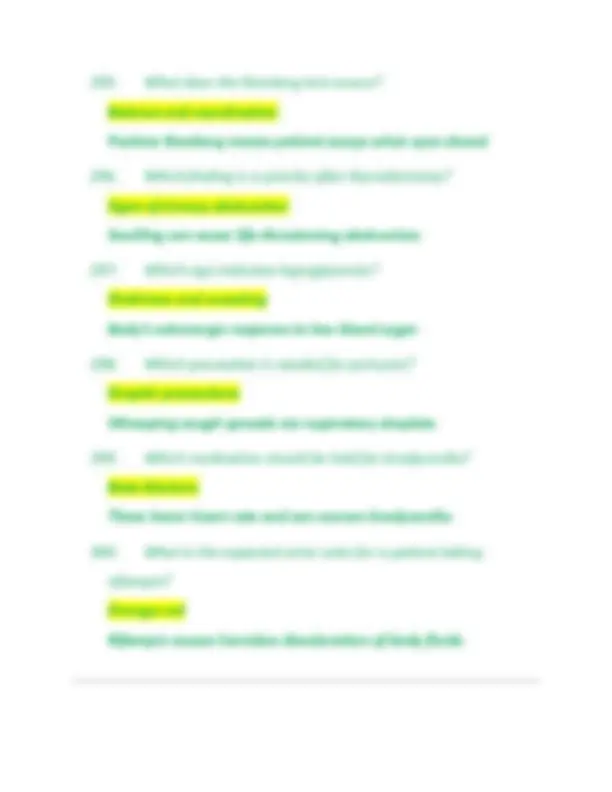
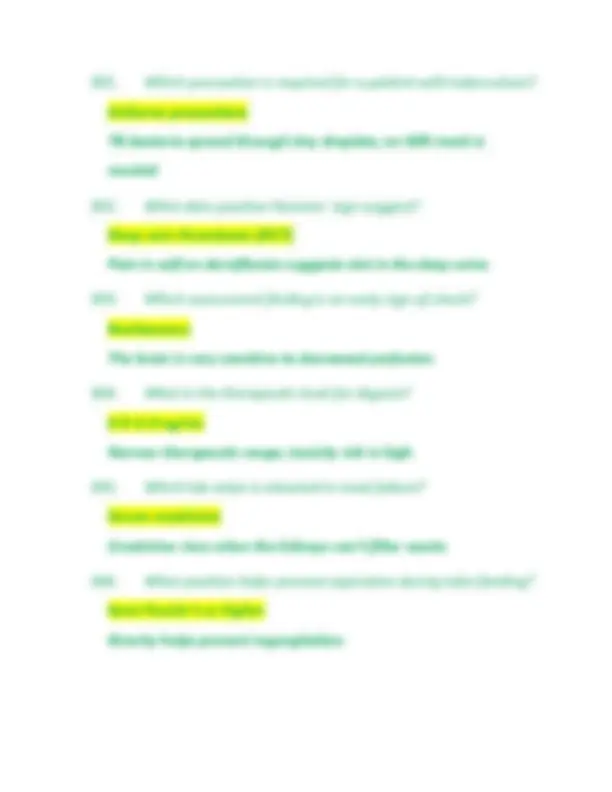
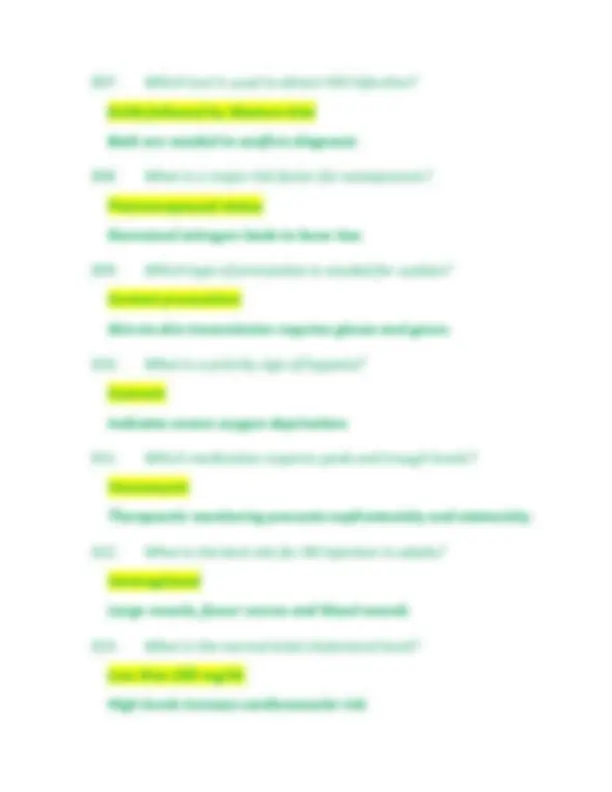
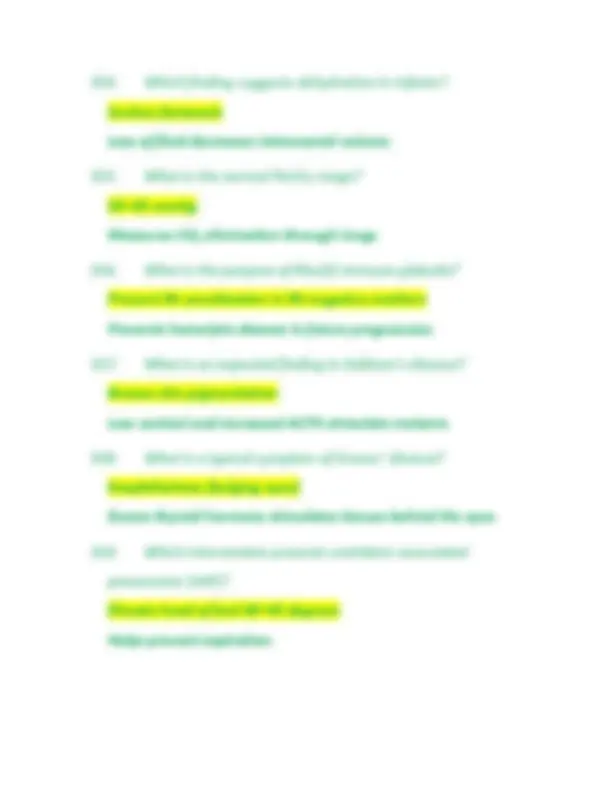
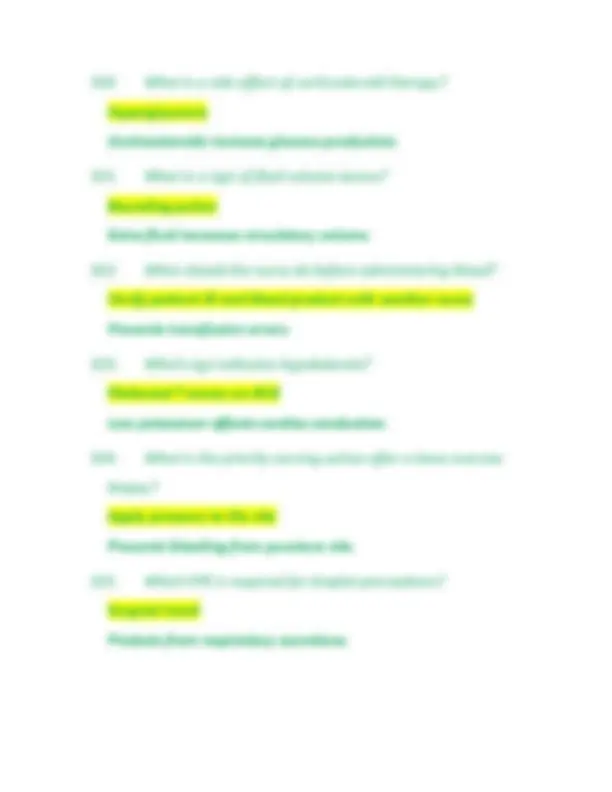
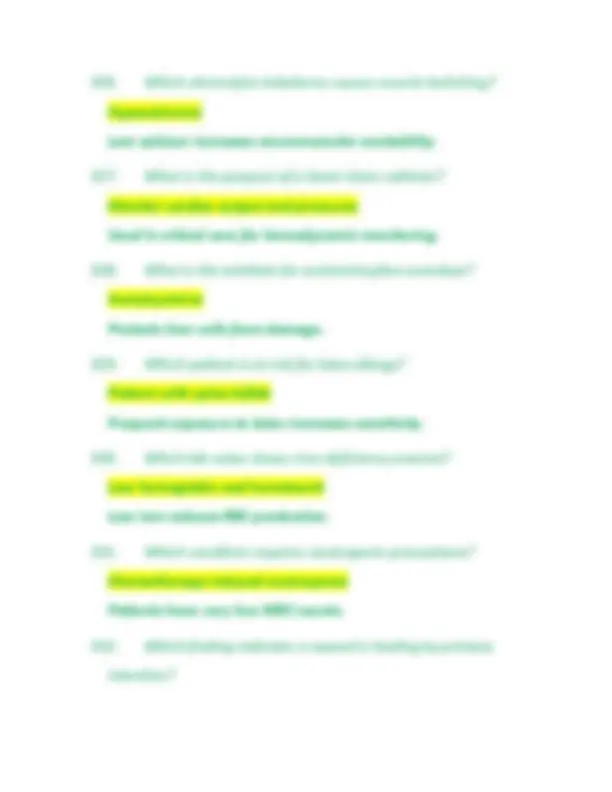
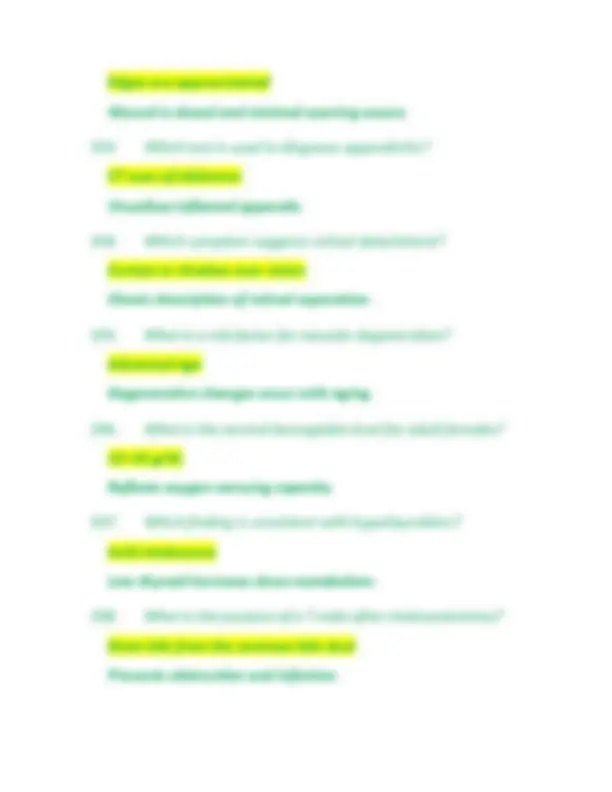
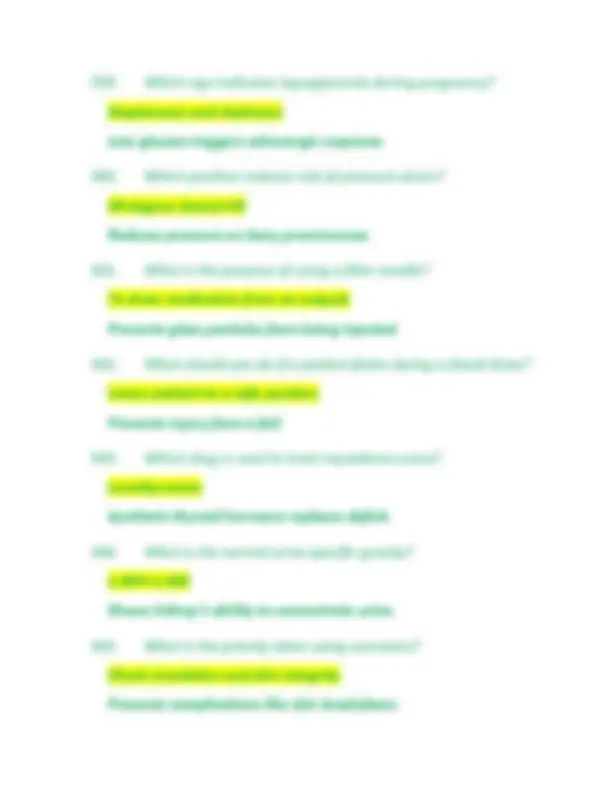
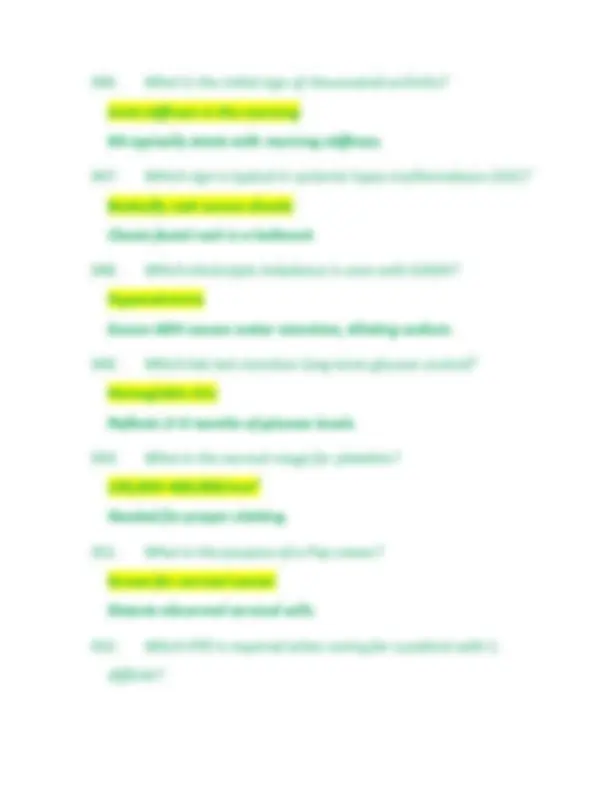
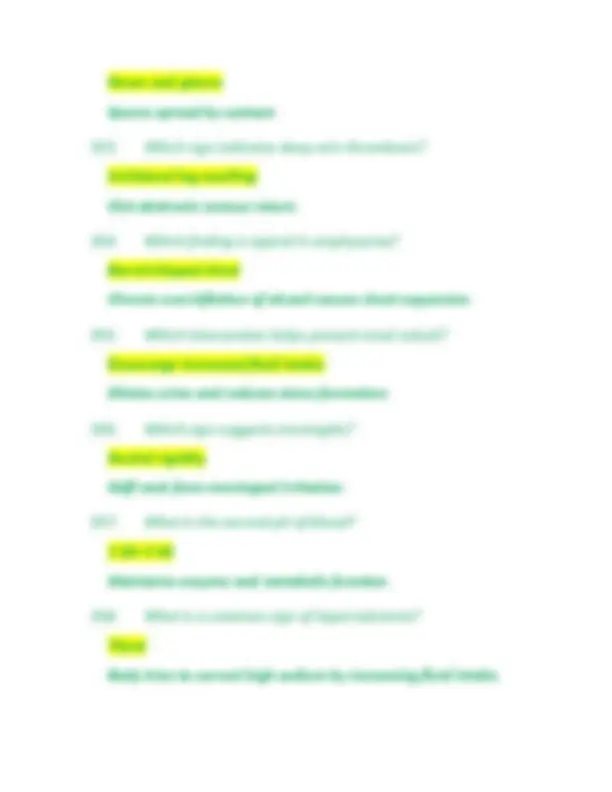
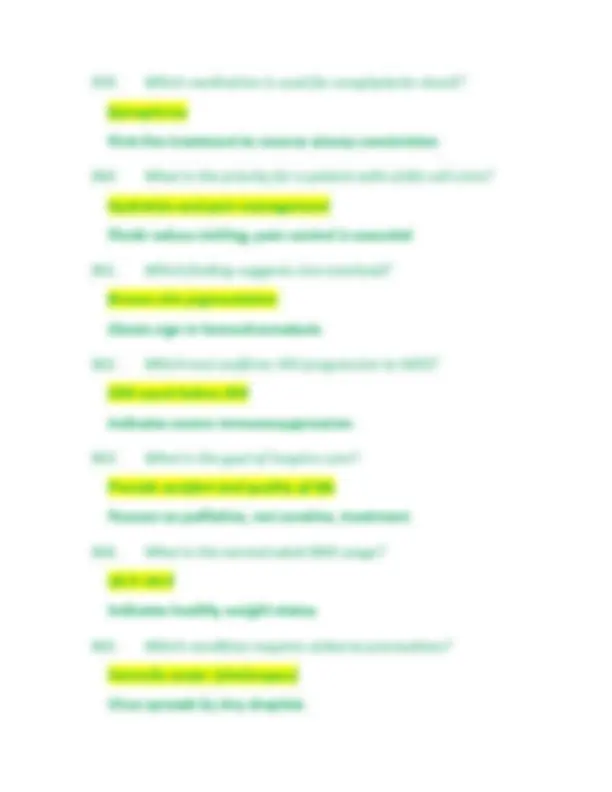
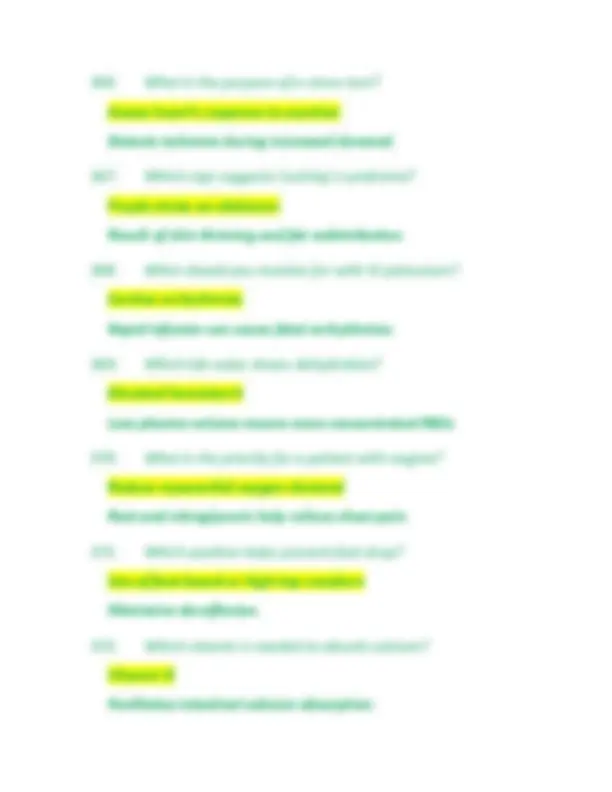
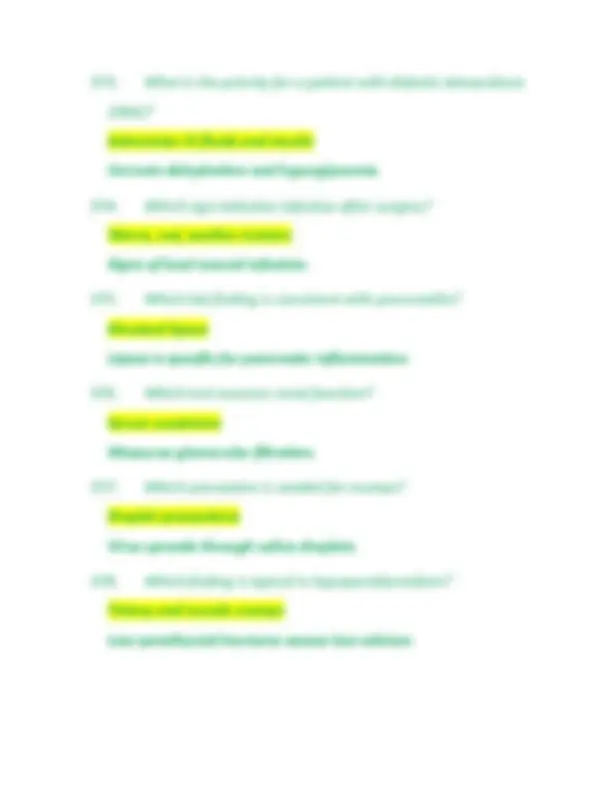
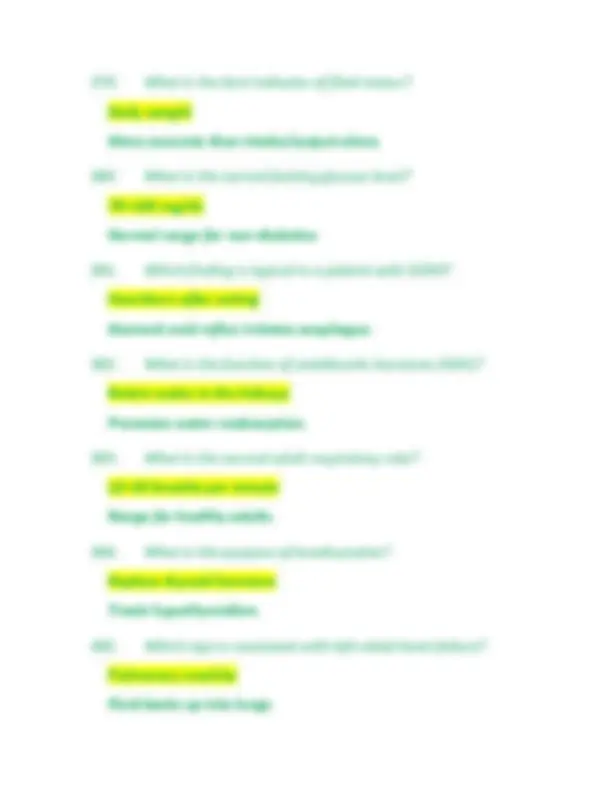
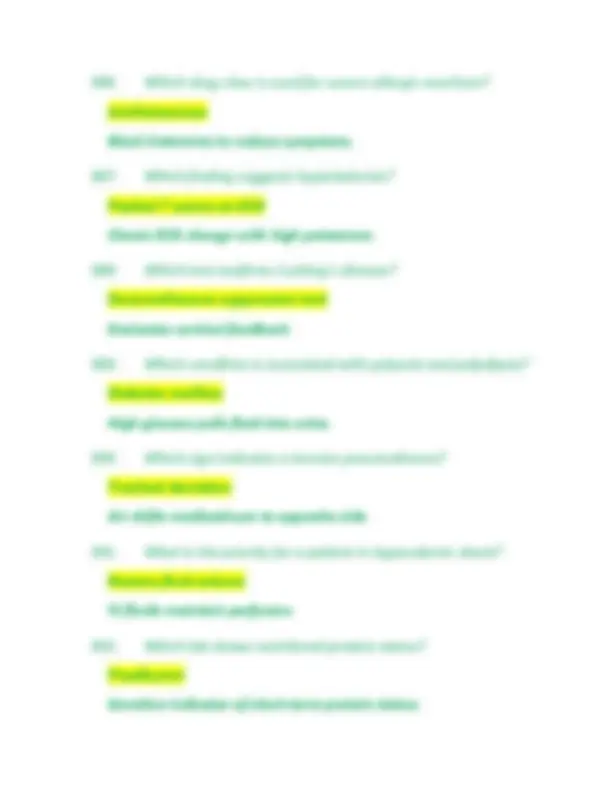
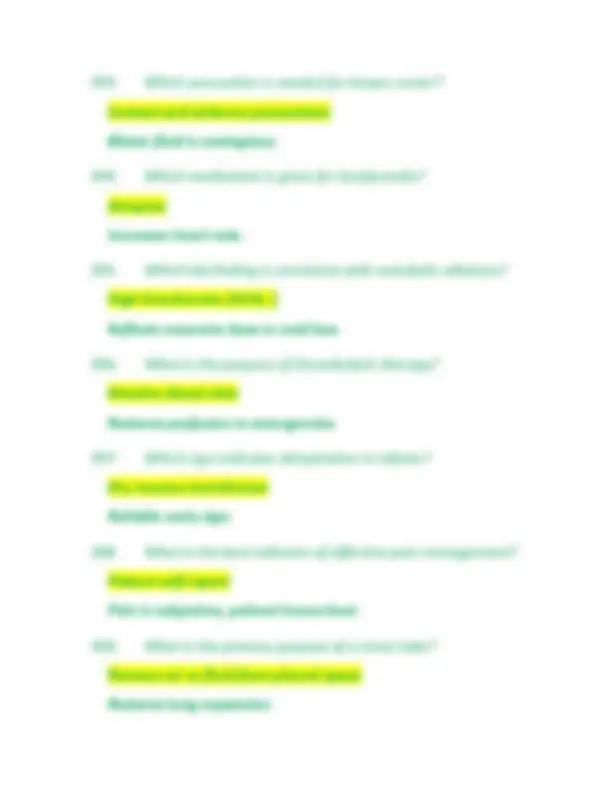
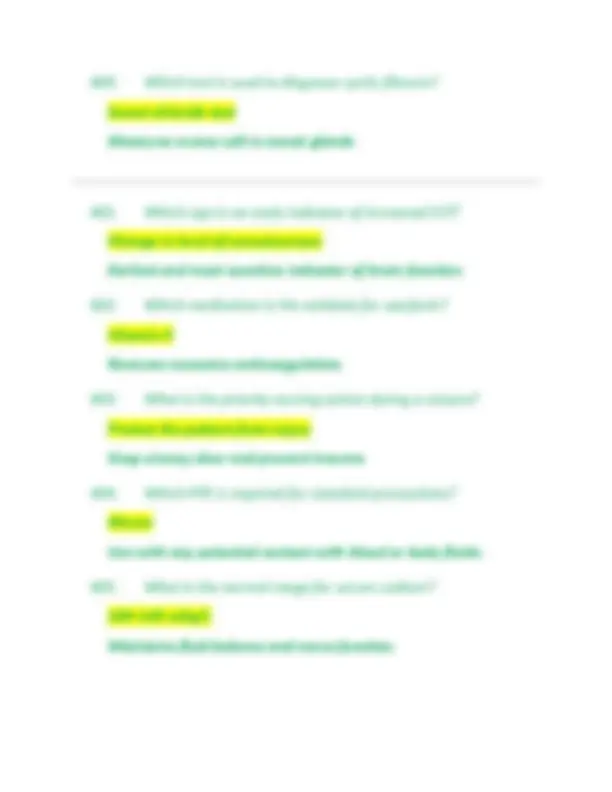
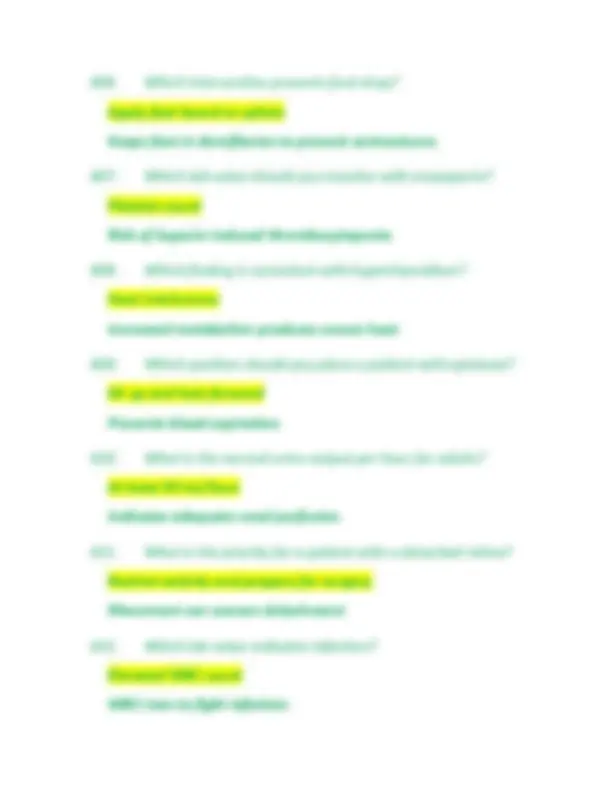

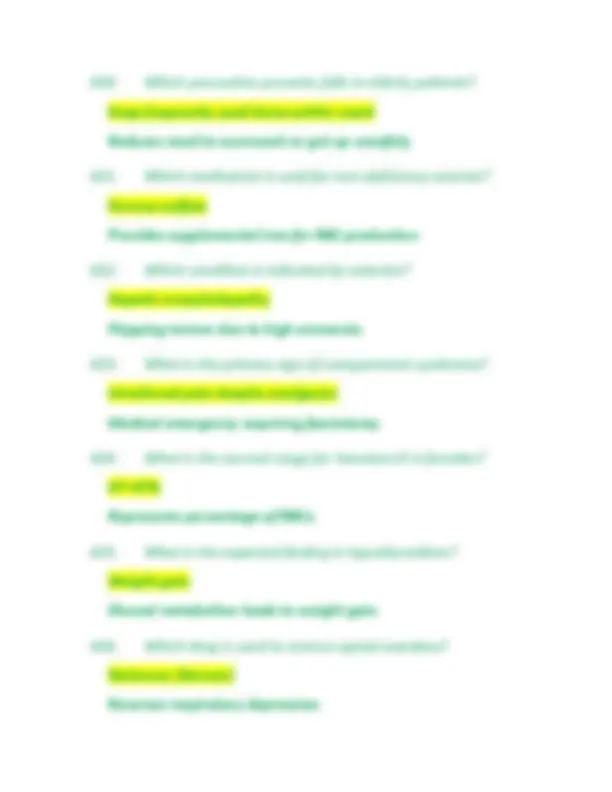
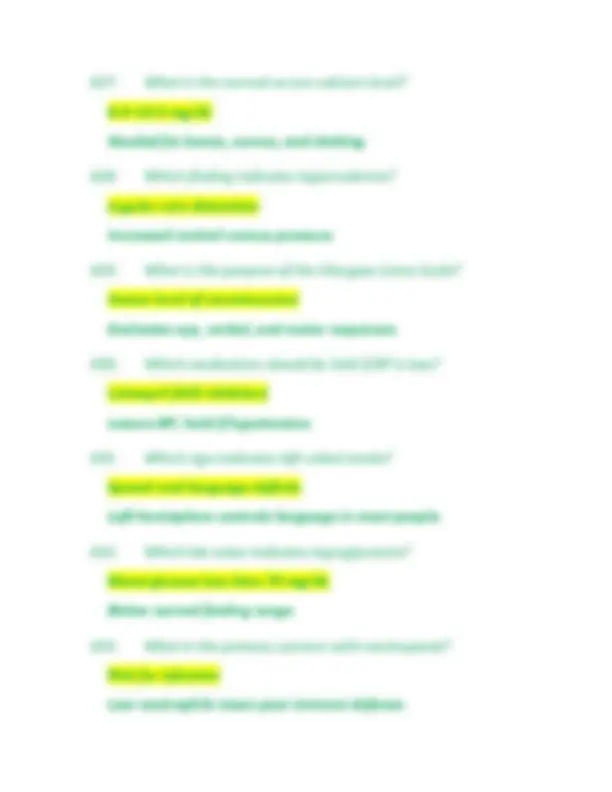
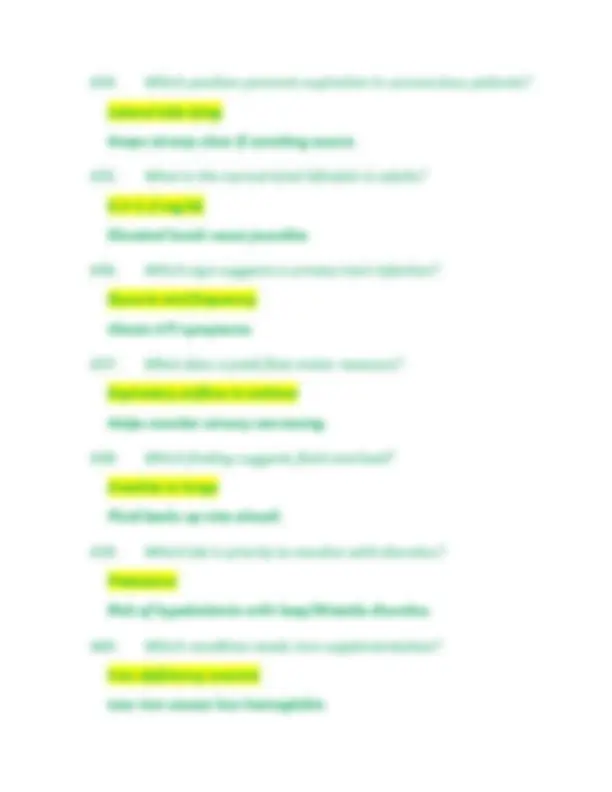
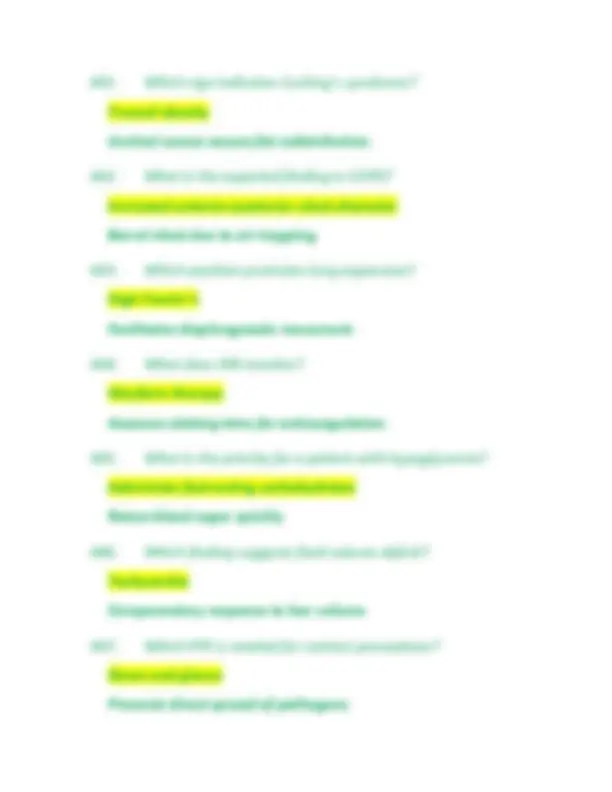
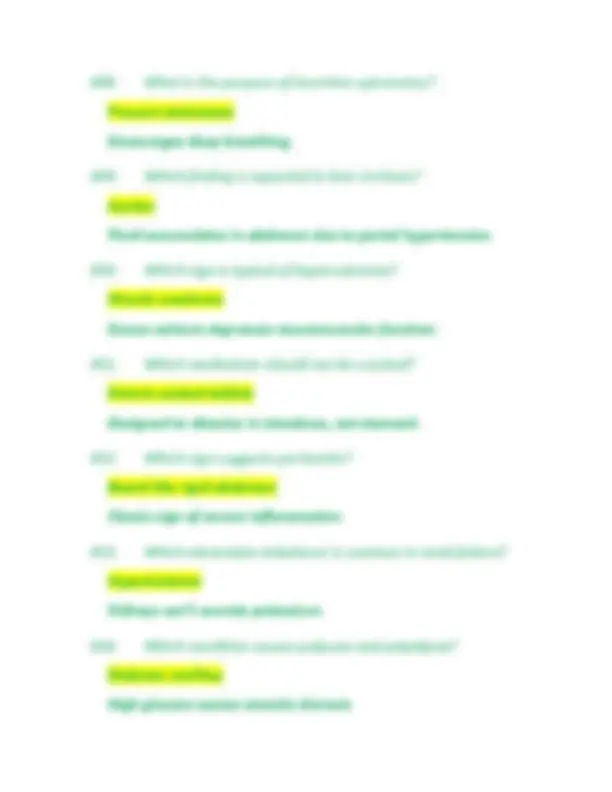
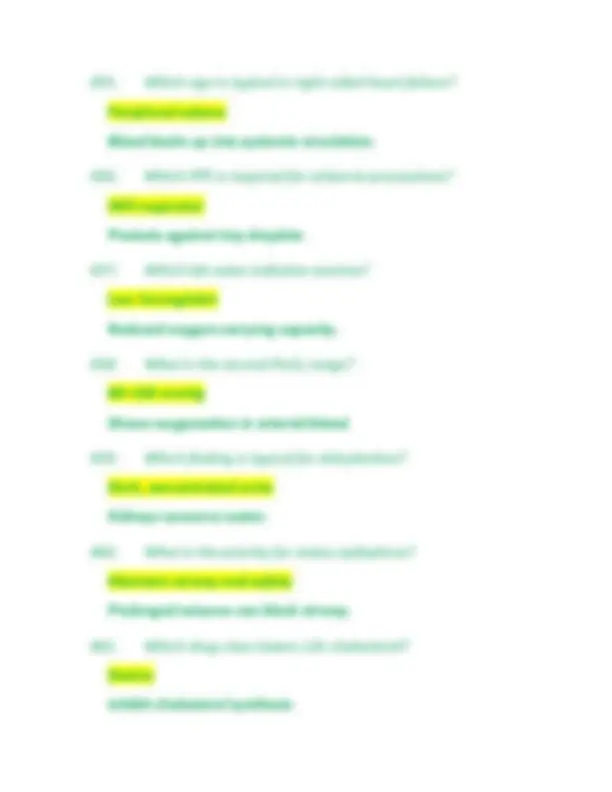
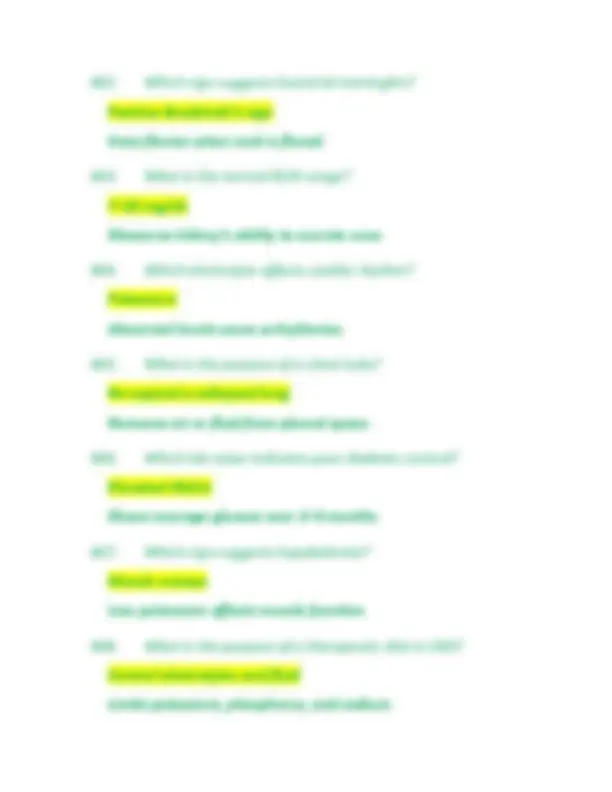
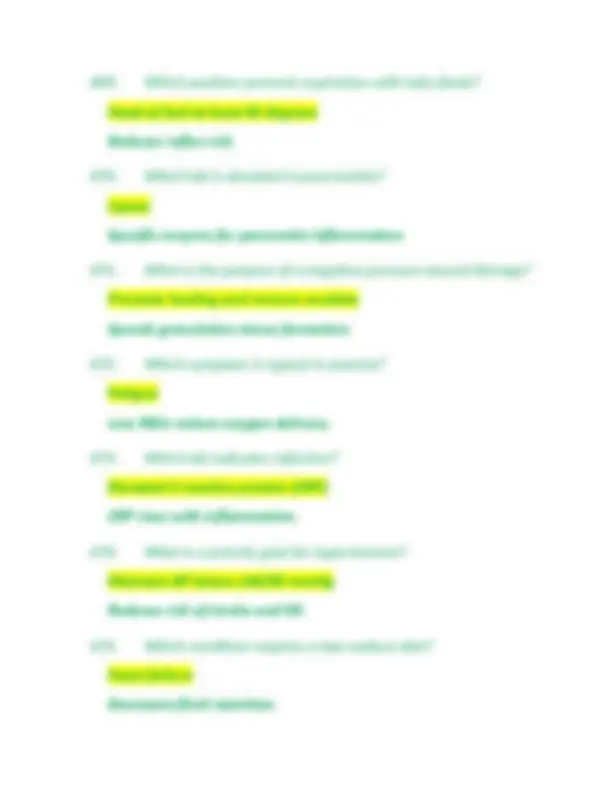
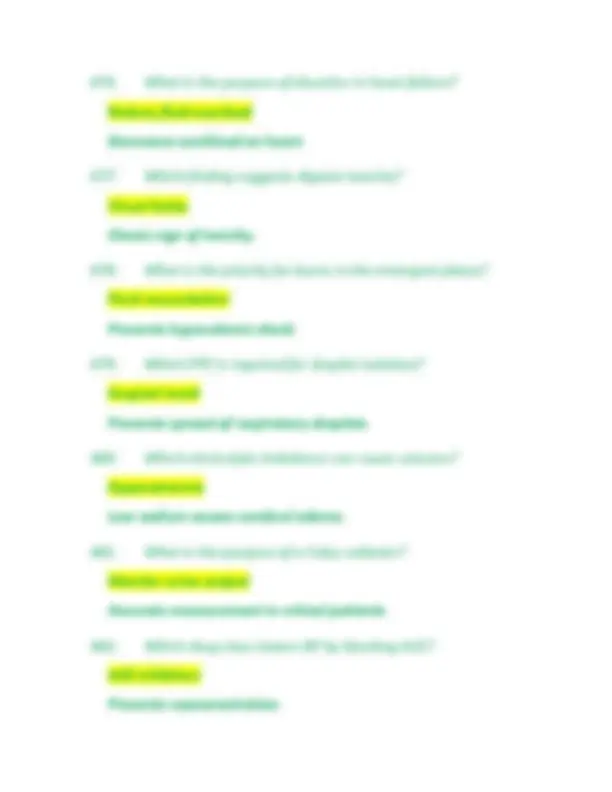
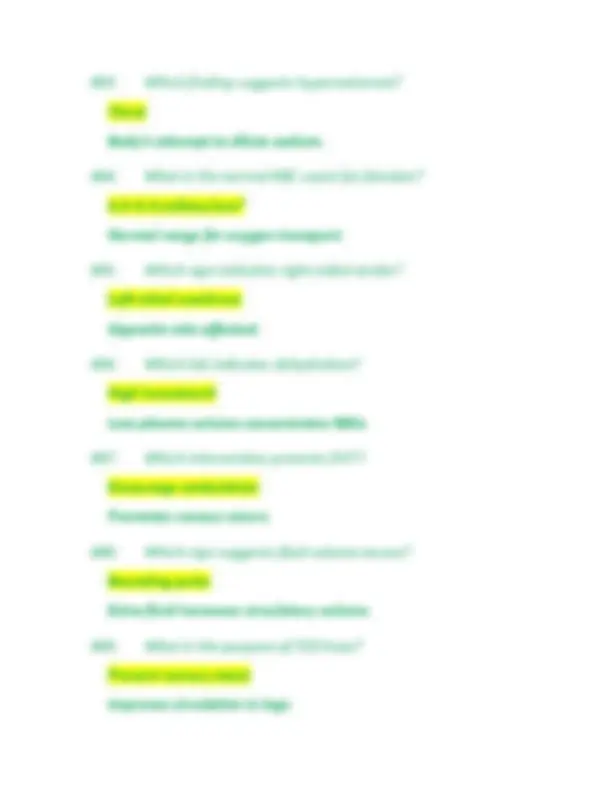
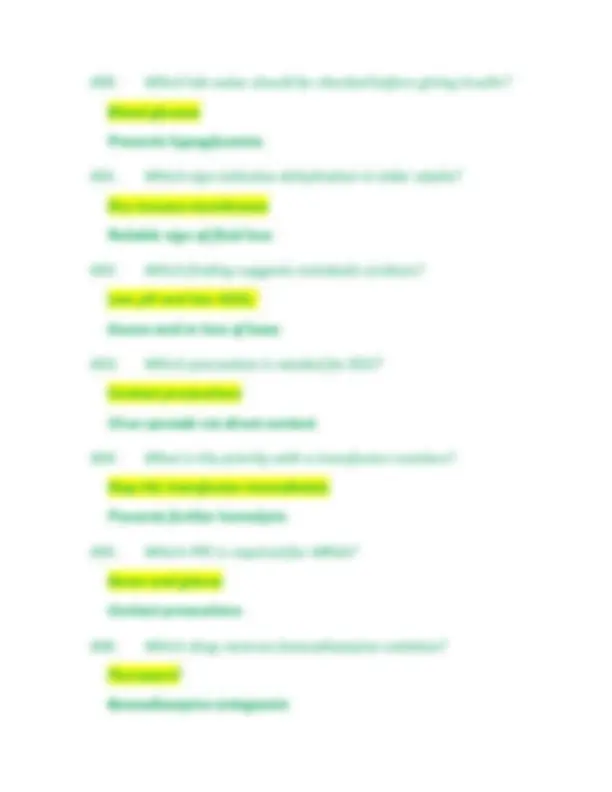
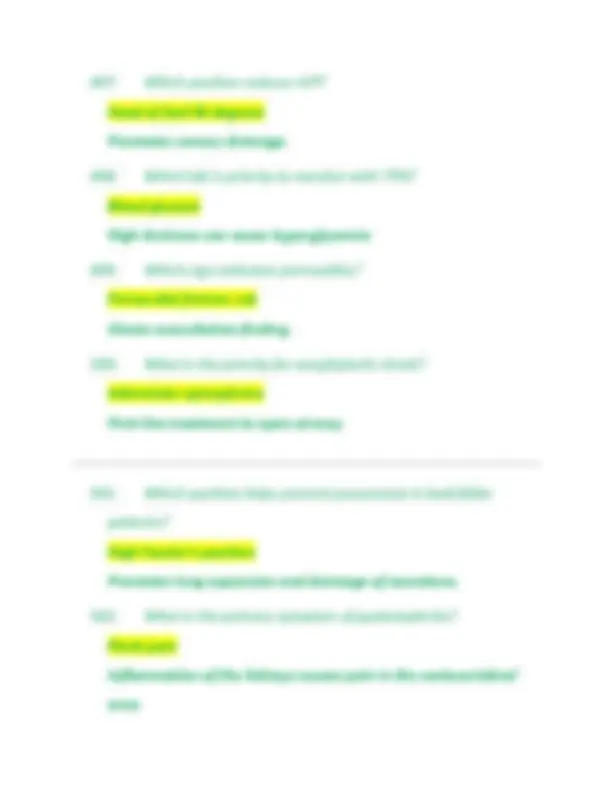
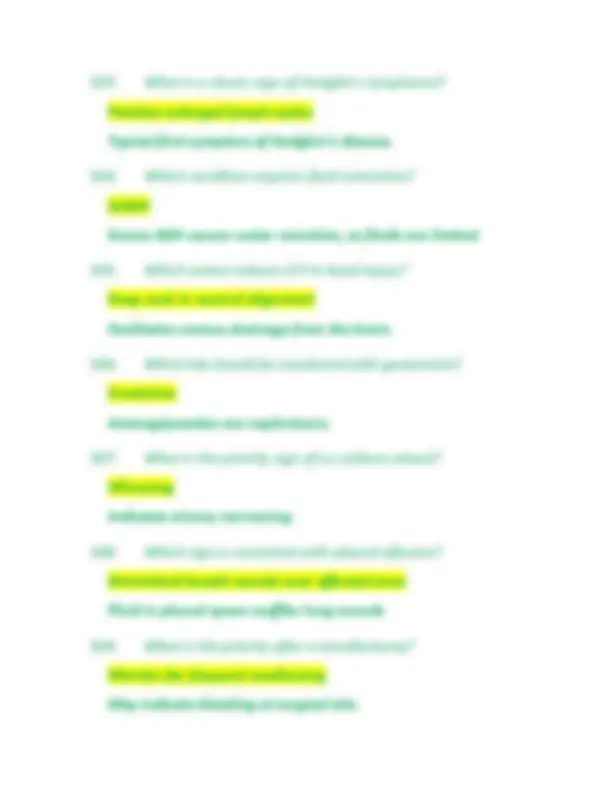
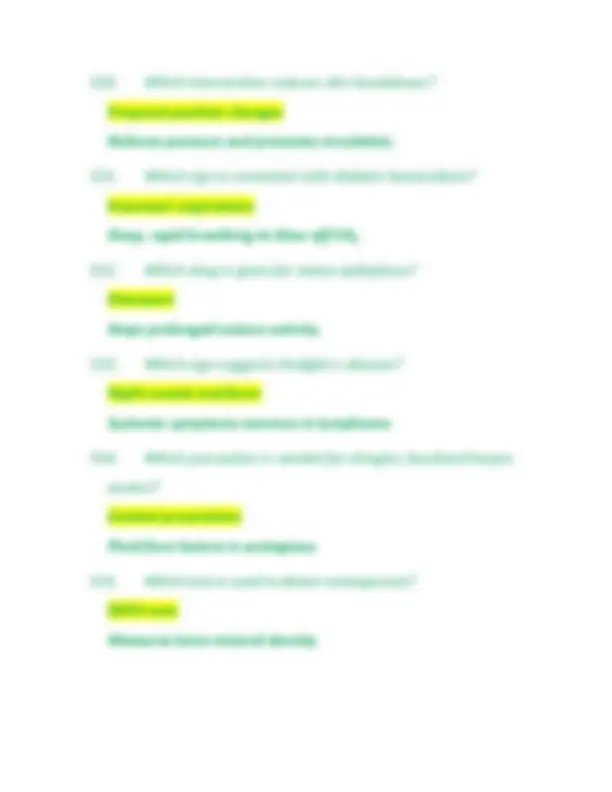
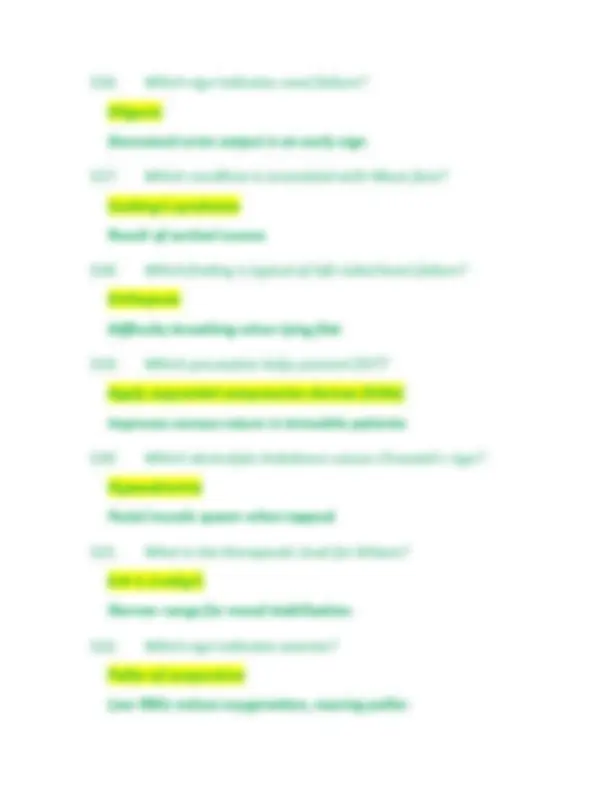
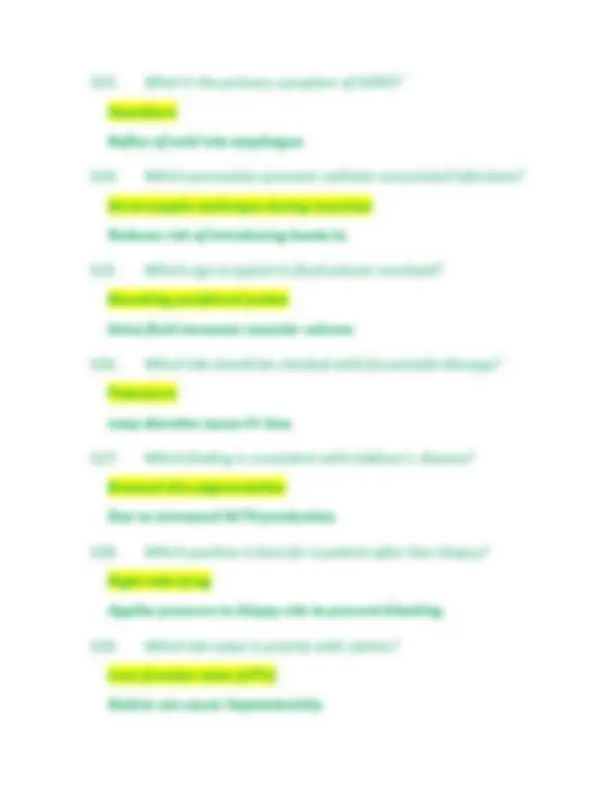
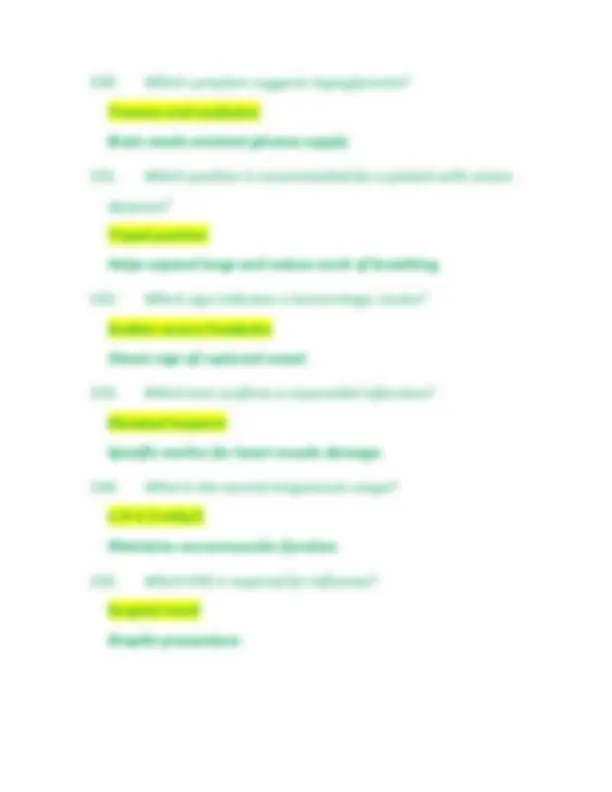
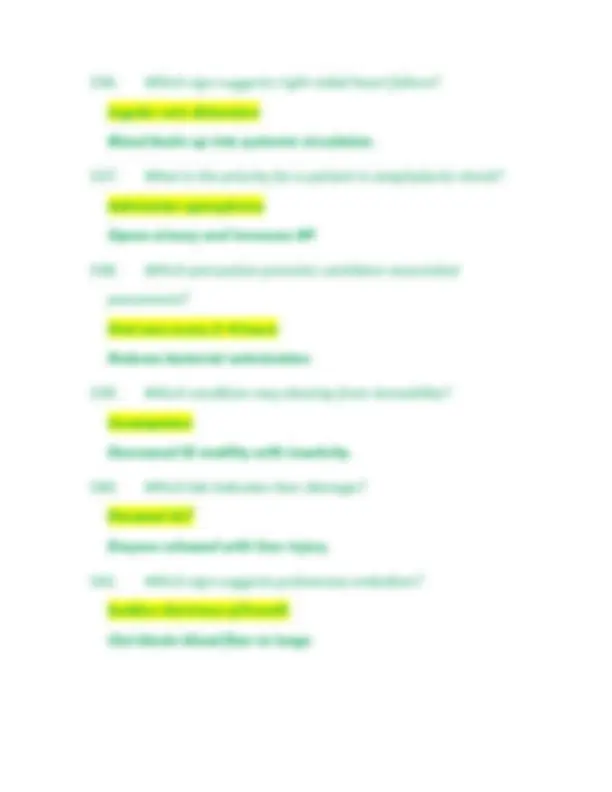
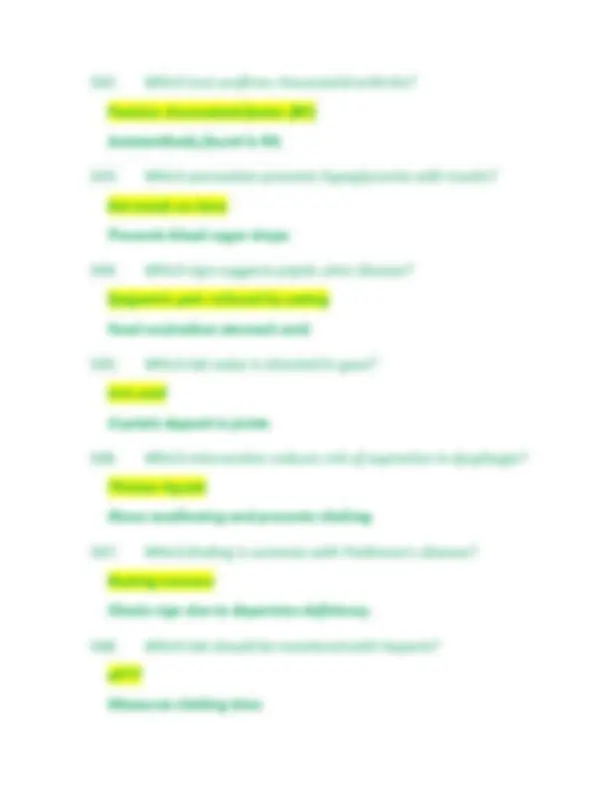
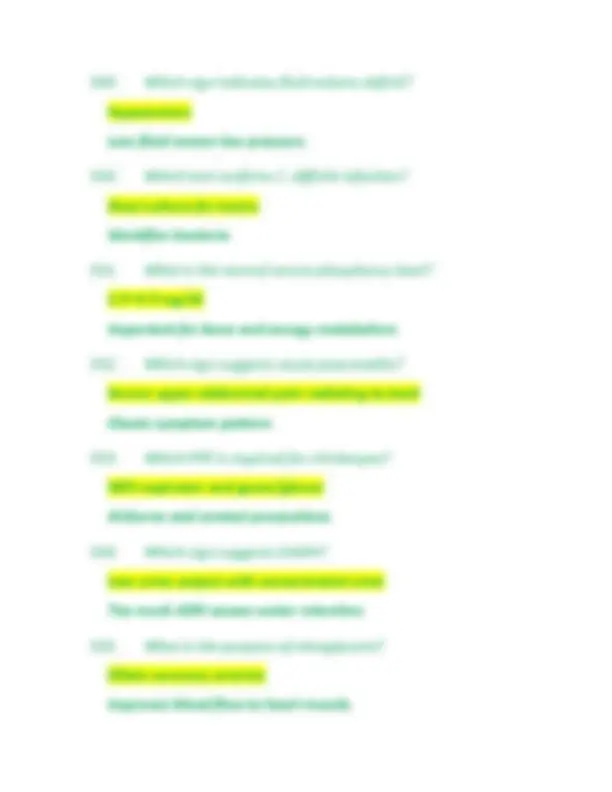
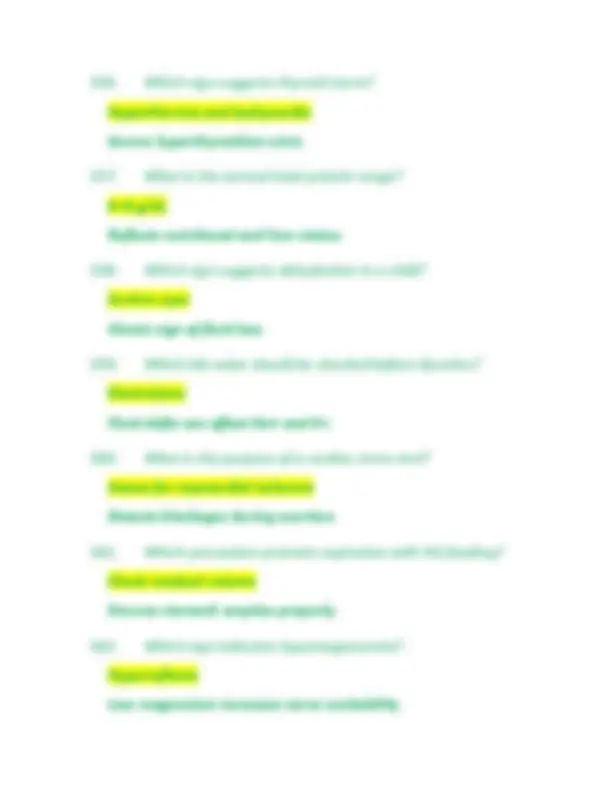
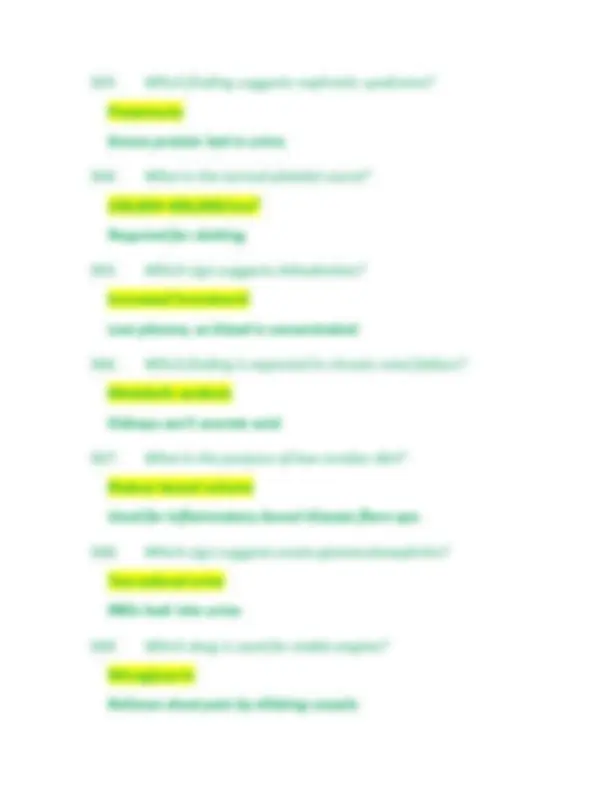
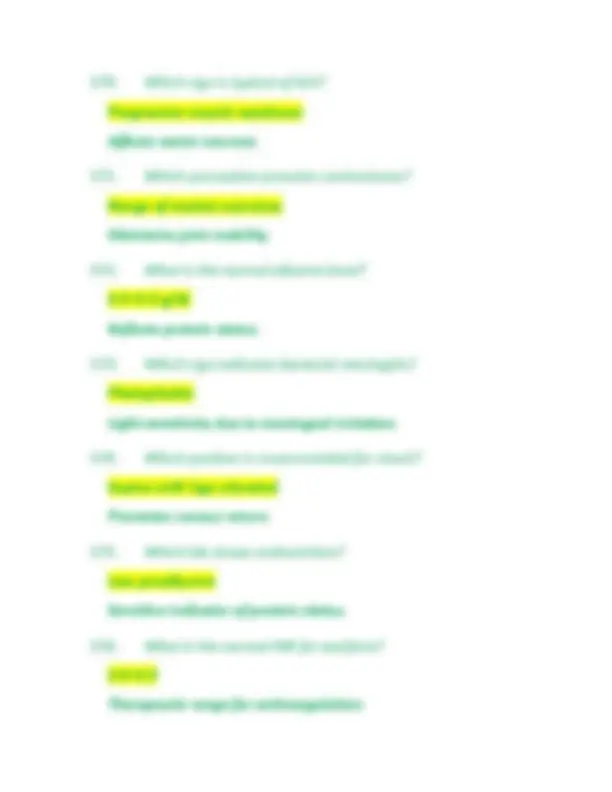
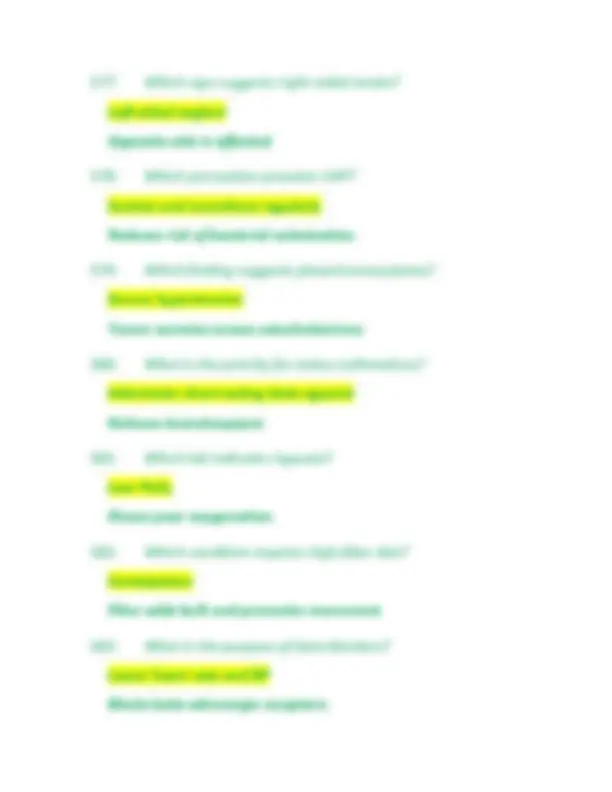



Study with the several resources on Docsity

Earn points by helping other students or get them with a premium plan


Prepare for your exams
Study with the several resources on Docsity

Earn points to download
Earn points by helping other students or get them with a premium plan
Community
Ask the community for help and clear up your study doubts
Discover the best universities in your country according to Docsity users
Free resources
Download our free guides on studying techniques, anxiety management strategies, and thesis advice from Docsity tutors
NUR 280 Comp Review- comp 1, comp 2, comp 3 - Q/A| TEST BANK| ALL CORRECT Galen
Typology: Exams
1 / 102

This page cannot be seen from the preview
Don't miss anything!





























































































1. What is the primary purpose of patient-centered care? To respect and respond to individual patient preferences, needs, and values Patient-centered care focuses on providing care that respects the patient's own preferences, needs, and values to ensure that patient values guide all clinical decisions. 2. Which intervention is most appropriate when caring for a patient with impaired gas exchange? Administer oxygen therapy as prescribed and monitor respiratory status Oxygen therapy helps improve oxygen saturation and respiratory function; continuous monitoring ensures timely response to changes. 3. What is the normal range for adult blood pressure? 120/80 mmHg
This is the accepted normal blood pressure for adults; values consistently above 130/80 may indicate hypertension.
4. When performing a head-to-toe assessment, which system is typically assessed first? Neurological system Assessing neurological status first ensures the patient’ s level of consciousness and orientation are evaluated before proceeding. 5. Which electrolyte imbalance is commonly associated with muscle cramps and cardiac arrhythmias? Hypokalemia Low potassium levels disrupt muscle and heart function, leading to cramps and arrhythmias. 6. What is the priority nursing action for a patient exhibiting signs of anaphylaxis? Administer epinephrine immediately Epinephrine reverses airway constriction and improves blood pressure during anaphylaxis, saving the patient’s life. 7. Which nursing diagnosis is appropriate for a patient with acute pain after surgery? Acute pain related to surgical incision
Stable patients typically require vital signs every 4 hours unless otherwise indicated.
12. What is the best position to promote lung expansion in a patient with respiratory distress? High Fowler’s positi on High Fowler’s (sitting up 60 - 90 degrees) maximizes lung expansion and eases breathing. 13. Which laboratory value indicates dehydration? Increased hematocrit Hematocrit rises when plasma volume decreases, indicating dehydration. 14. What does a pulse oximeter measure? Oxygen saturation of hemoglobin in the blood Pulse oximetry estimates the percentage of hemoglobin saturated with oxygen. 15. Which action should a nurse take when a patient has an NG tube for suctioning? Monitor for electrolyte imbalances and fluid volume status
Suctioning via NG tube can cause loss of fluids and electrolytes, requiring close monitoring.
16. What is a critical sign of hypoglycemia? Sweating and confusion Sweating and mental status changes are common early signs of low blood glucose. 17. What intervention can reduce the risk of pressure ulcers in immobile patients? Regular repositioning every 2 hours Frequent repositioning relieves pressure on vulnerable skin areas, preventing ulcers. 18. Which of the following is an early sign of infection? Elevated temperature A rise in body temperature often signals the onset of infection. 19. What is the therapeutic range for the drug digoxin? 0.5 to 2 ng/mL Levels above this range increase toxicity risk, while lower levels may be ineffective. 20. How is pain best assessed in nonverbal patients?
Calm presence and reassurance help reduce patient anxiety and promote relaxation.
25. What is the primary goal of wound care in patients with surgical incisions? Prevent infection and promote healing Maintaining a clean wound environment minimizes infection risk and supports tissue repair. 26. Which symptom indicates a potential adverse effect of opioid analgesics? Respiratory depression Opioids can depress the respiratory center, leading to inadequate breathing. 27. How should a nurse respond to a patient refusing medication? Explore the patient’s reasons and provide education about benefits and risks Understanding patient concerns allows tailored education and promotes informed decisions. 28. Which nursing action helps prevent deep vein thrombosis (DVT)?
Encourage early ambulation Movement promotes circulation and reduces DVT risk.
29. What is the most appropriate action for a nurse if a patient's intravenous (IV) site is swollen and painful? Discontinue the IV and notify the healthcare provider Swelling and pain indicate infiltration or phlebitis, requiring IV removal. 30. How can nurses promote effective communication with patients who have hearing loss? Face the patient, speak clearly, and use visual aids These strategies improve understanding for patients with hearing impairment. 31. What is the mechanism of action for beta-blockers? They decrease heart rate and myocardial contractility Beta-blockers reduce workload on the heart by slowing heart rate and decreasing contractility. 32. Which of the following indicates fluid overload? Peripheral edema Excess fluid accumulates in tissues, causing edema.
38. What is the purpose of advance directives? To communicate patient wishes regarding medical treatment if unable to speak Advance directives guide care decisions based on patient preferences. 39. Which nursing intervention helps prevent aspiration in patients with swallowing difficulties? Elevate the head of the bed during and after meals Elevating the head reduces risk of food or liquid entering the airway. 40. What assessment finding suggests dehydration in an elderly patient? Dry mucous membranes Dehydration often presents with dry mouth and mucous membranes. 41. What is the priority when a patient is experiencing chest pain? Assess the pain characteristics and vital signs immediately Rapid assessment helps determine cause and urgency for treatment. 42. Which lab value indicates anemia? Low hemoglobin
Hemoglobin is the oxygen-carrying component of blood; low levels indicate anemia.
43. What does the acronym SBAR stand for in communication? Situation, Background, Assessment, Recommendation SBAR is a structured communication tool to improve clarity and safety. 44. Which patient is at greatest risk for developing a pressure ulcer? A patient who is immobile and has poor nutrition Immobility and poor nutrition both increase ulcer risk. 45. What is the appropriate response if a patient experiences a seizure? Protect the patient from injury and maintain airway patency Safety and airway are priorities during seizures. 46. How does a nurse calculate intake and output? By measuring all fluids consumed and excreted over a 24-hour period Accurate recording helps assess fluid balance. 47. What is a common side effect of antihypertensive medications?
52. Which laboratory value is most important to monitor in a patient receiving heparin therapy? Activated partial thromboplastin time (aPTT) aPTT measures the blood’s clotting time and helps prevent bleeding complications. 53. What is the hallmark symptom of Parkinson’s disease? Resting tremor A resting tremor is a classic early sign due to basal ganglia dysfunction. 54. When administering insulin, what is the correct technique to avoid lipodystrophy? Rotate injection sites regularly Rotating sites prevents tissue damage and improves insulin absorption. 55. What type of diet is recommended for a patient with chronic kidney disease? Low protein, low sodium diet Reducing protein and sodium decreases kidney workload and fluid retention.
56. What is the priority nursing intervention for a patient with suspected stroke? Ensure airway patency and call for emergency response Airway management and rapid medical evaluation are critical for stroke care. 57. Which medication is contraindicated in patients with asthma? Beta-blockers Beta-blockers can cause bronchospasm and worsen asthma symptoms. 58. What is the purpose of a chest tube? To remove air or fluid from the pleural space Chest tubes re-expand the lung by draining air, blood, or fluid. 59. How does the nurse assess for deep vein thrombosis (DVT)? By checking for unilateral leg swelling, warmth, and tenderness These are common clinical signs of DVT. 60. Which condition is characterized by a deficiency of intrinsic factor leading to pernicious anemia? Vitamin B12 deficiency
66. What does a positive Babinski reflex indicate in adults? Possible central nervous system injury A positive Babinski (toes fan upward) is abnormal after infancy and signals CNS issues. 67. Which drug is used to reverse opioid overdose? Naloxone Naloxone rapidly antagonizes opioid receptors reversing respiratory depression. 68. What is a common sign of congestive heart failure (CHF)? Peripheral edema Fluid accumulation in tissues is a hallmark of CHF. 69. When assessing a patient’s nutritional status, which lab value is most useful? Serum albumin Albumin reflects protein status and long-term nutritional health. 70. What is the role of antipyretic medications? To reduce fever Antipyretics lower body temperature by acting on the hypothalamus.
71. How should the nurse position a patient for a rectal examination? Left lateral (Sims’) position This position provides optimal access and comfort. 72. Which acid-base imbalance is characterized by low pH and high CO2 levels? Respiratory acidosis Increased CO2 lowers blood pH causing respiratory acidosis. 73. What is the first sign of hypoxia? Restlessness or anxiety Early hypoxia affects brain function, leading to restlessness. 74. What is the primary action of diuretics? Increase urine output Diuretics promote renal excretion of sodium and water. 75. How should the nurse prevent catheter-associated infections? Maintain sterile technique during catheter insertion Sterility during insertion reduces infection risk.
They block the conversion of angiotensin I to angiotensin II This causes vasodilation and decreases blood pressure.
82. Which vaccine is recommended annually for adults? Influenza vaccine Annual flu vaccination reduces risk of seasonal influenza. 83. What does the presence of protein in urine (proteinuria) usually indicate? Kidney damage Protein leaks into urine when glomerular function is impaired. 84. What is the best way to verify nasogastric (NG) tube placement? Check pH of aspirate and confirm with chest x-ray pH testing and x-ray provide accurate confirmation of placement. 85. What type of isolation is required for patients with MRSA? Contact isolation MRSA spreads through direct contact requiring gown and gloves. 86. Which condition requires a low-residue diet? Inflammatory bowel disease during flare-ups Low-residue diets reduce bowel irritation and diarrhea.
87. What is the priority action for a patient with hypoventilation? Assist with ventilation and oxygen therapy Supporting breathing prevents hypoxia and respiratory acidosis. 88. How is hypernatremia treated? With hypotonic fluids and treating underlying cause Dilution and correction of cause restore sodium balance. 89. Which clinical manifestation is typical in iron deficiency anemia? Pallor and fatigue Reduced hemoglobin causes decreased oxygen delivery resulting in these symptoms. 90. How often should wounds be assessed for signs of infection? Every shift or more frequently if indicated Regular checks allow early identification and treatment. 91. What is the priority nursing action for a patient with suspected sepsis? Obtain blood cultures and administer antibiotics promptly Early diagnosis and treatment improve outcomes in sepsis.